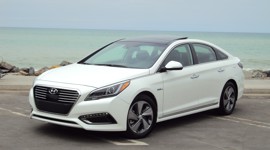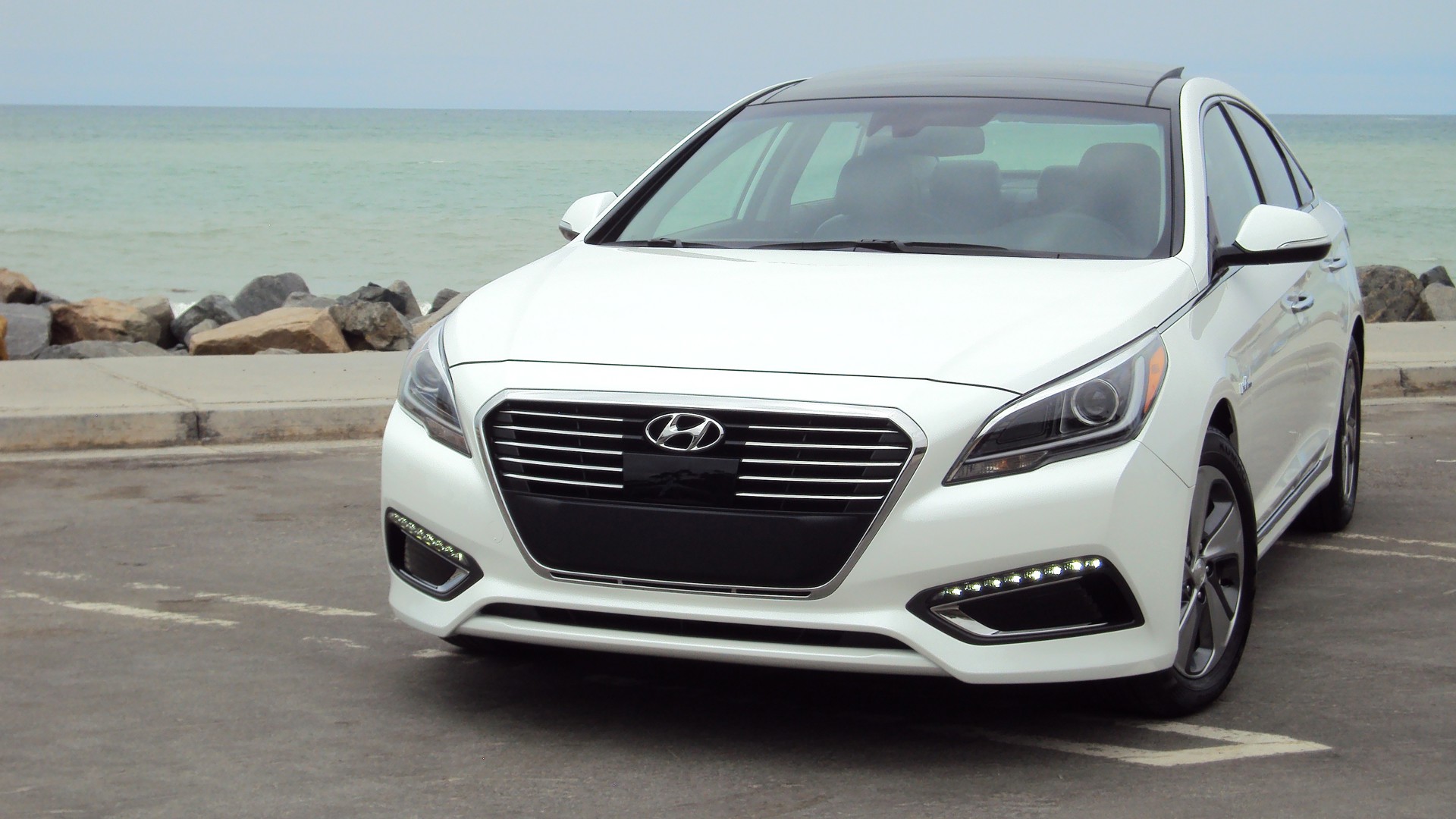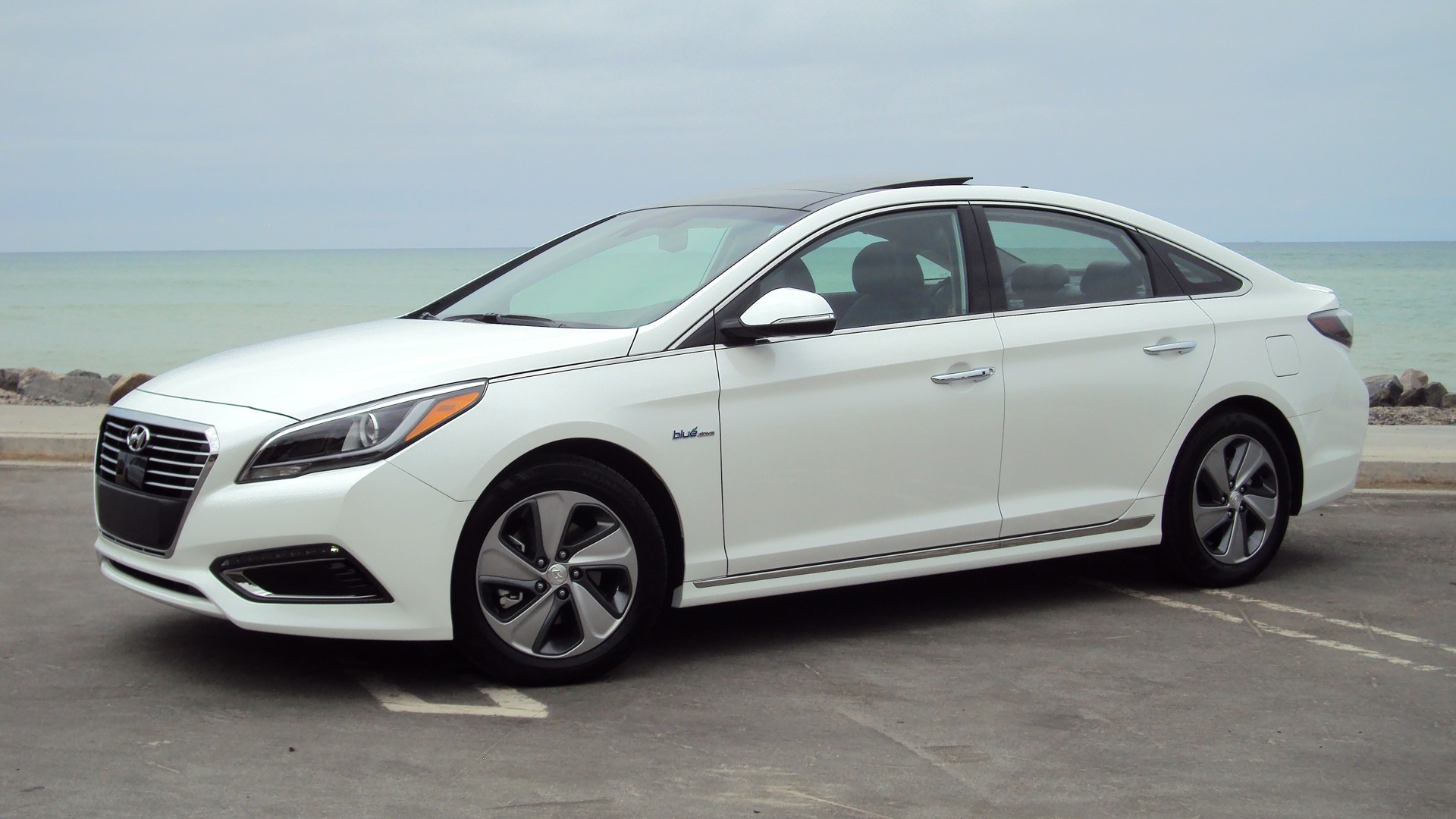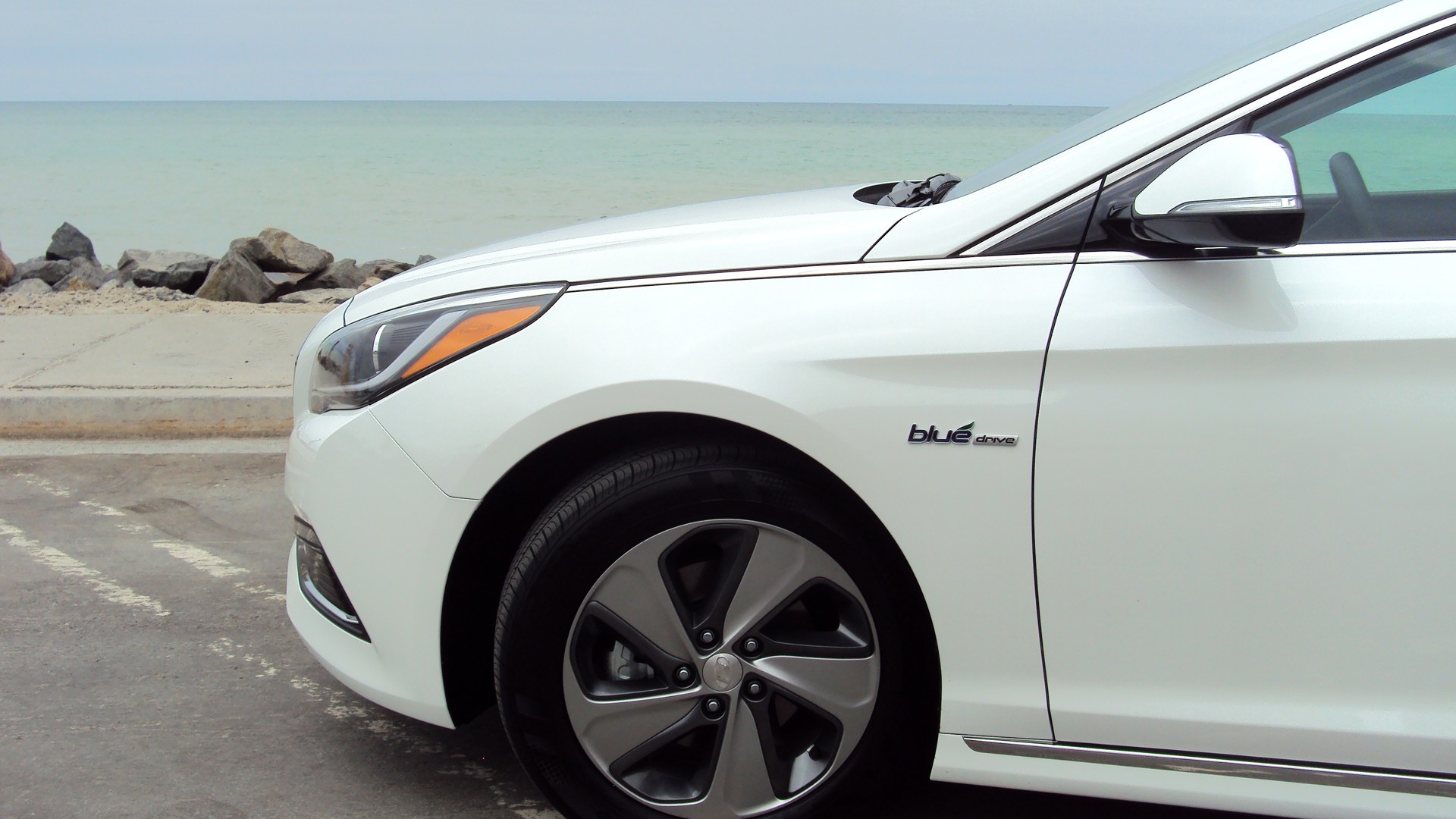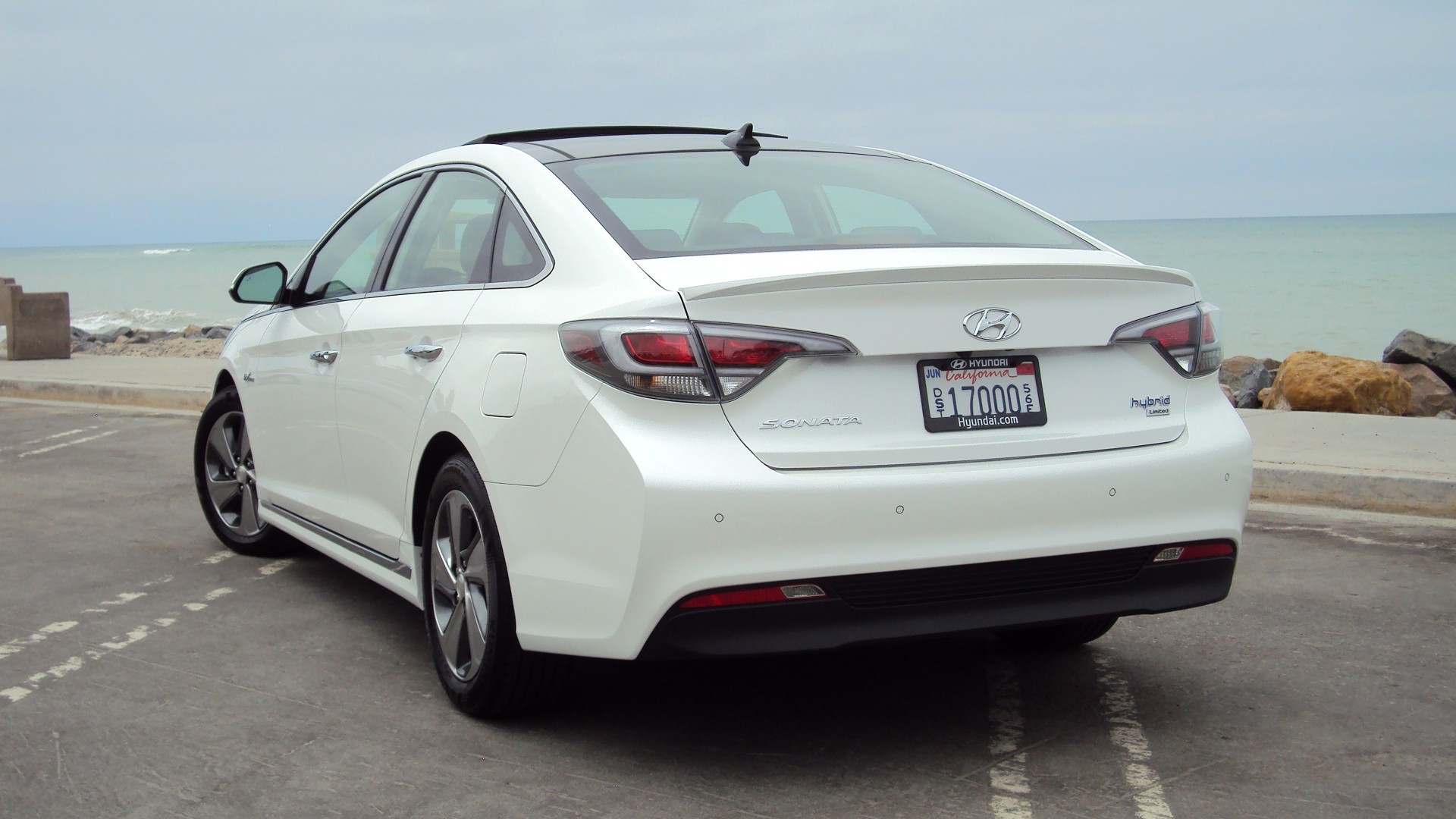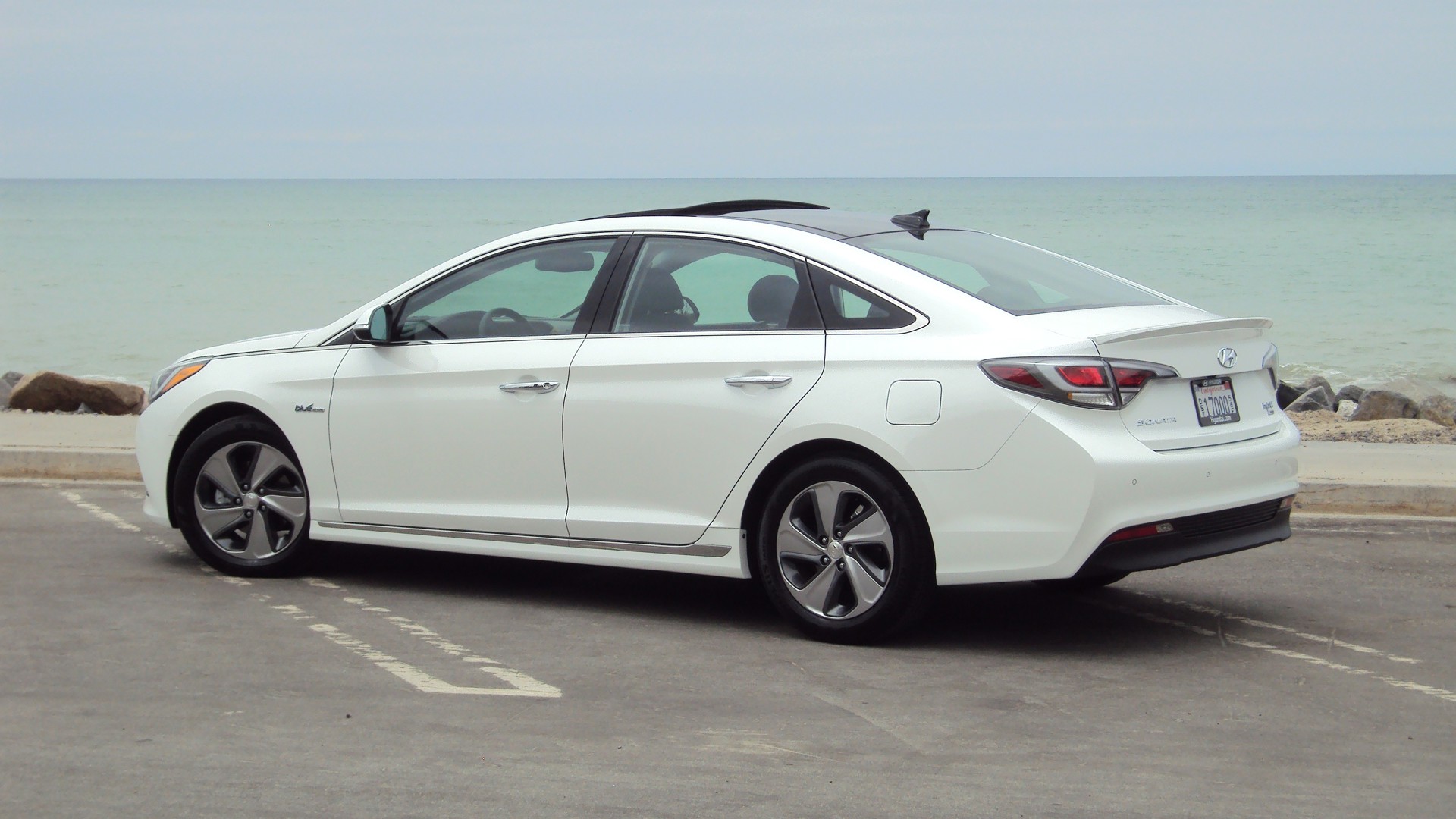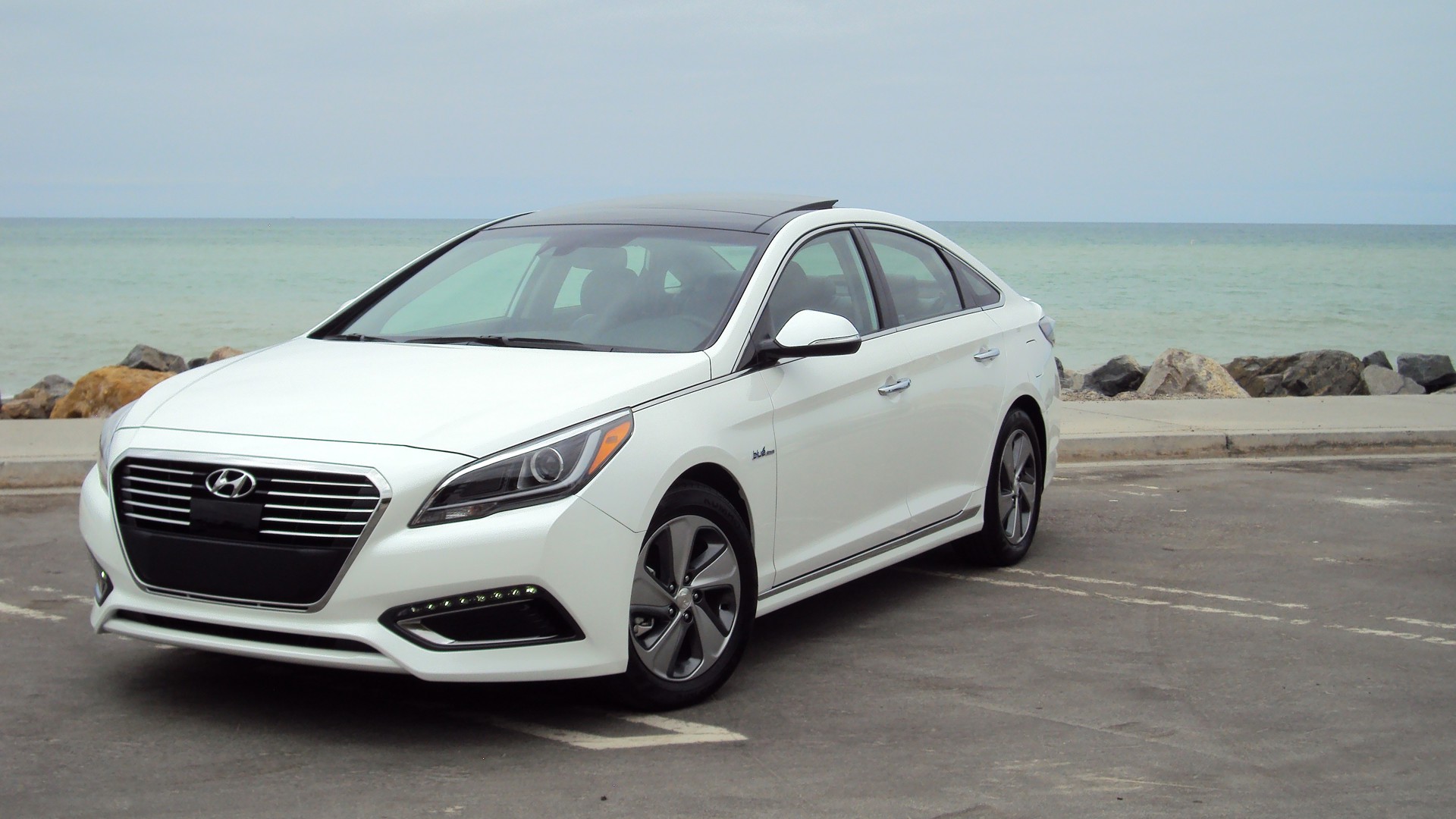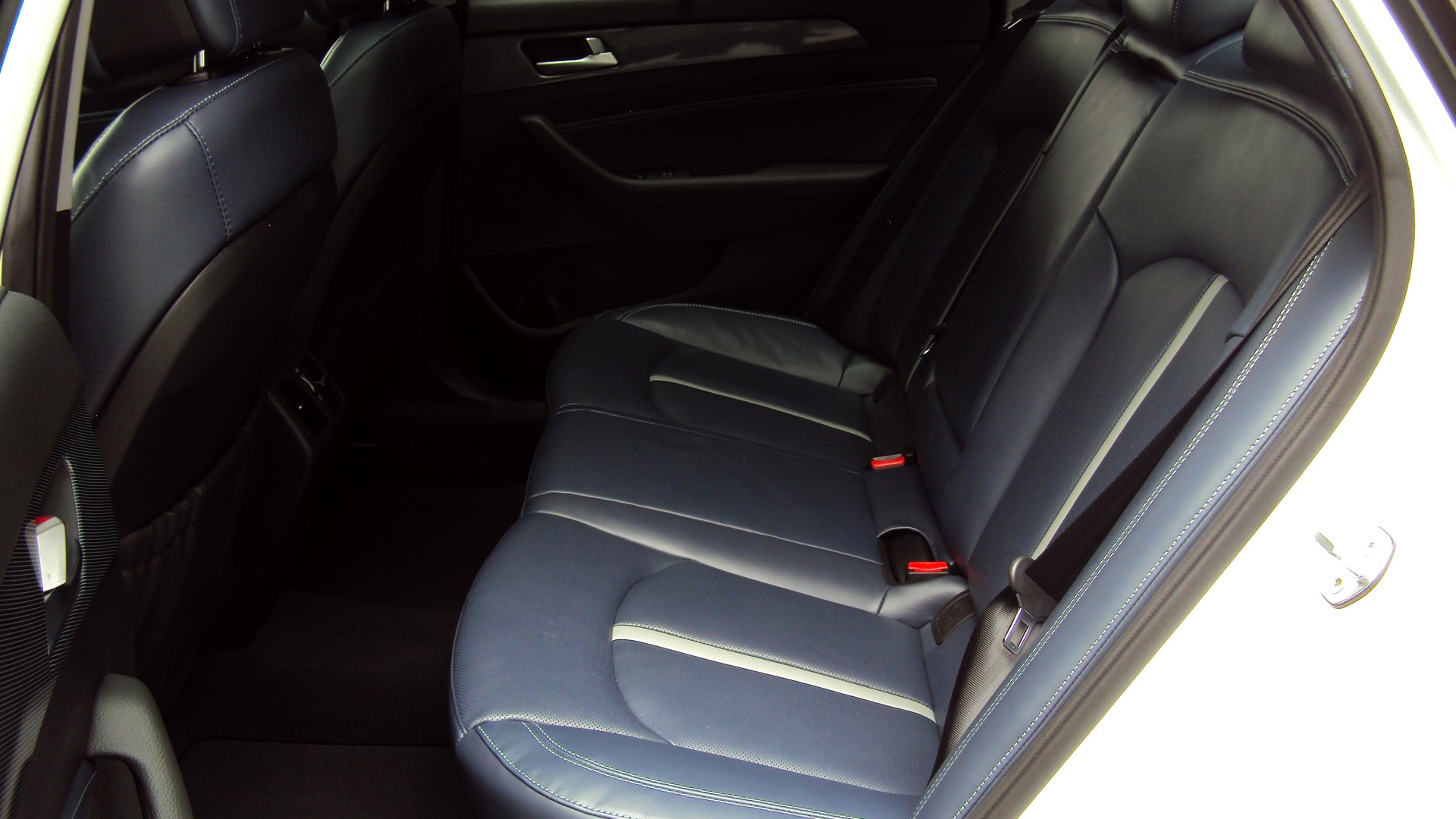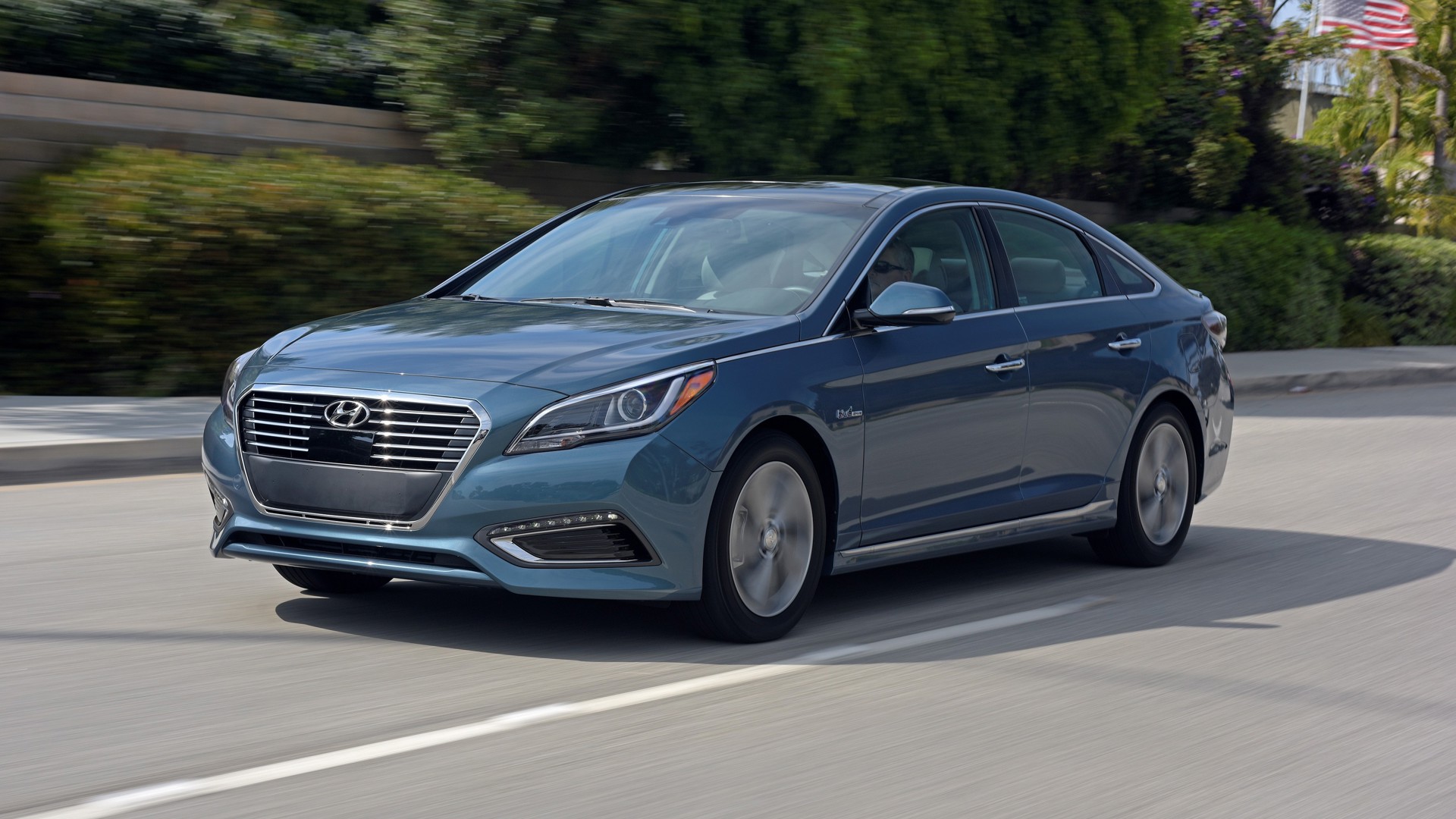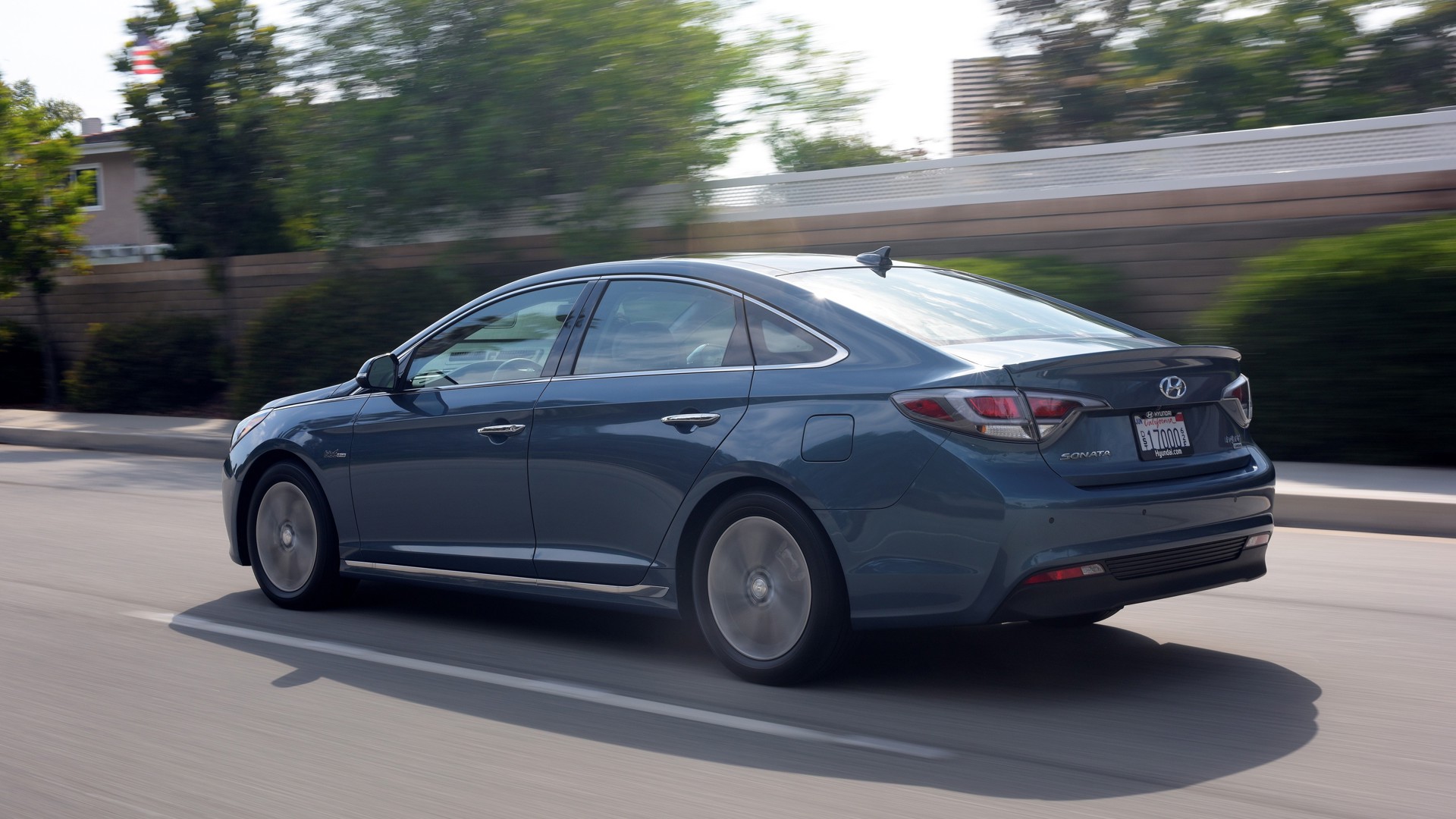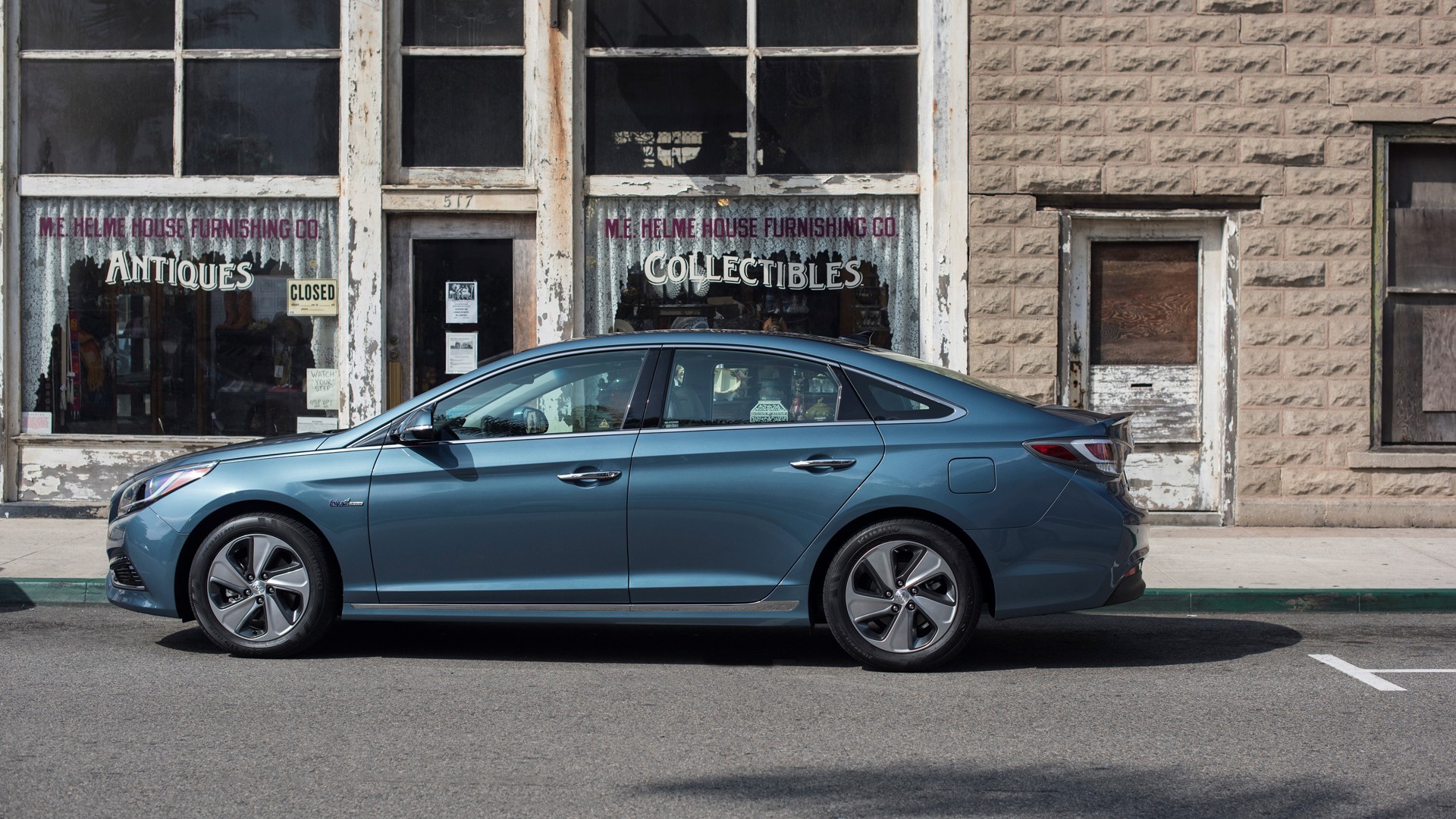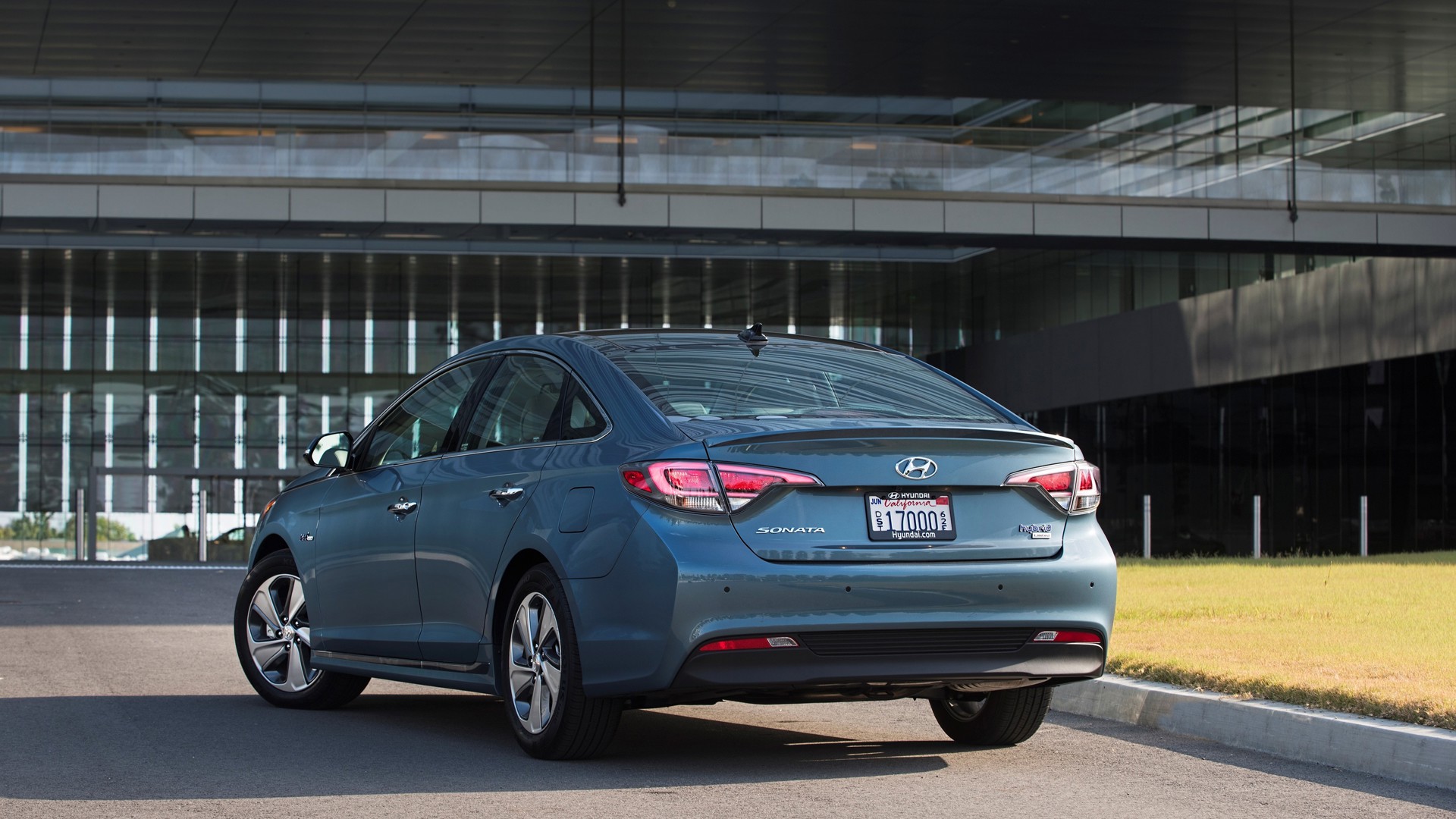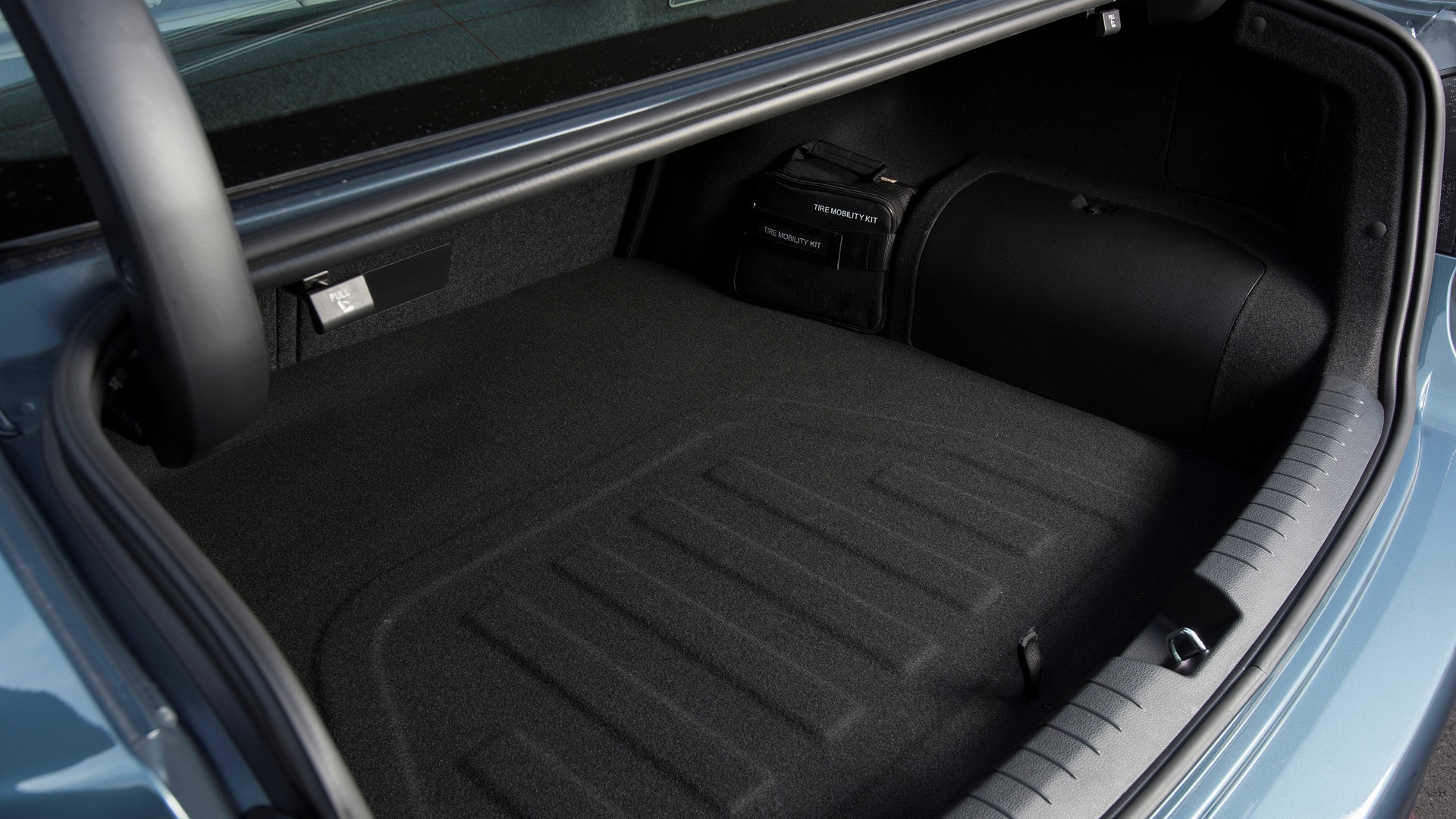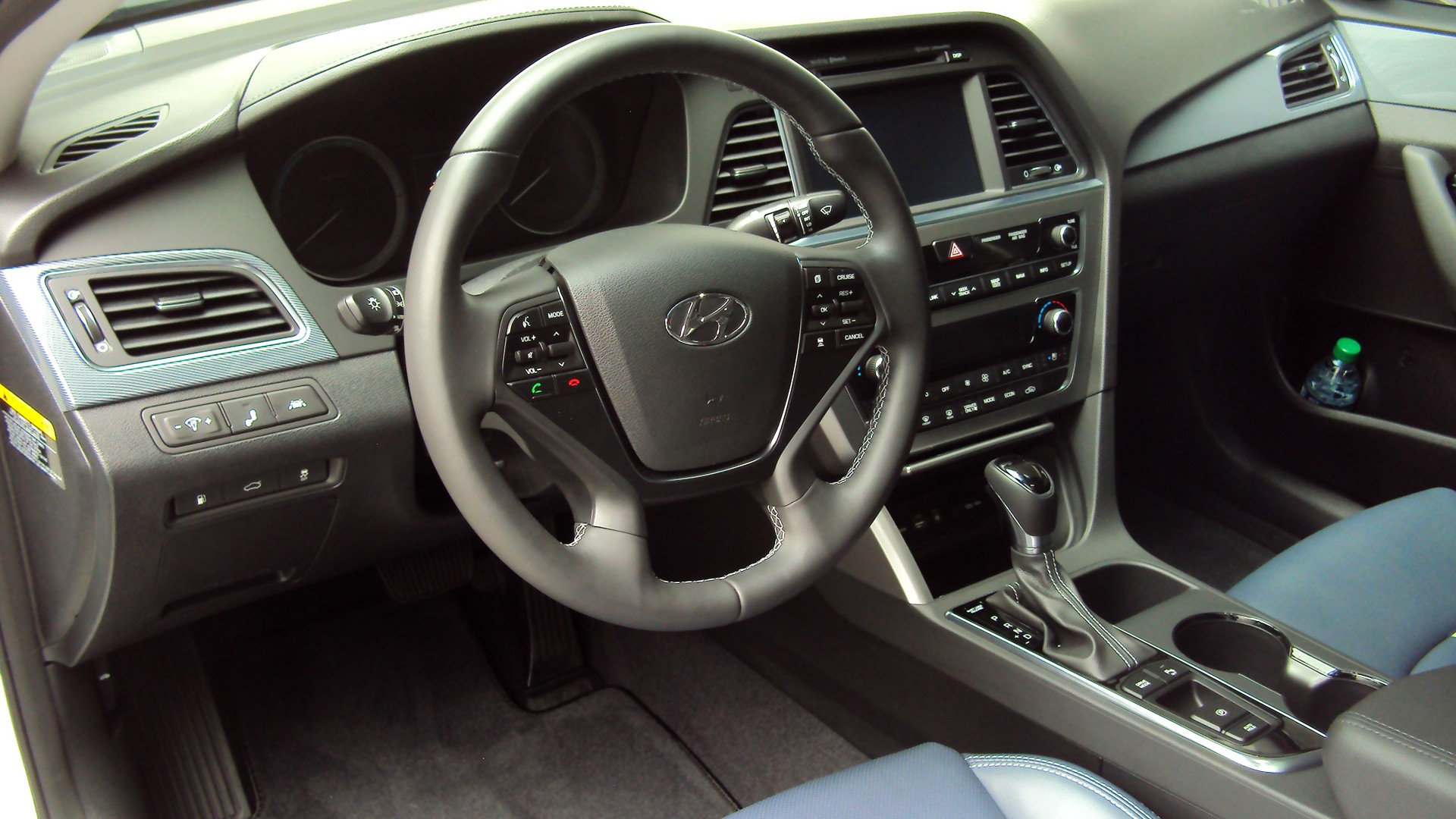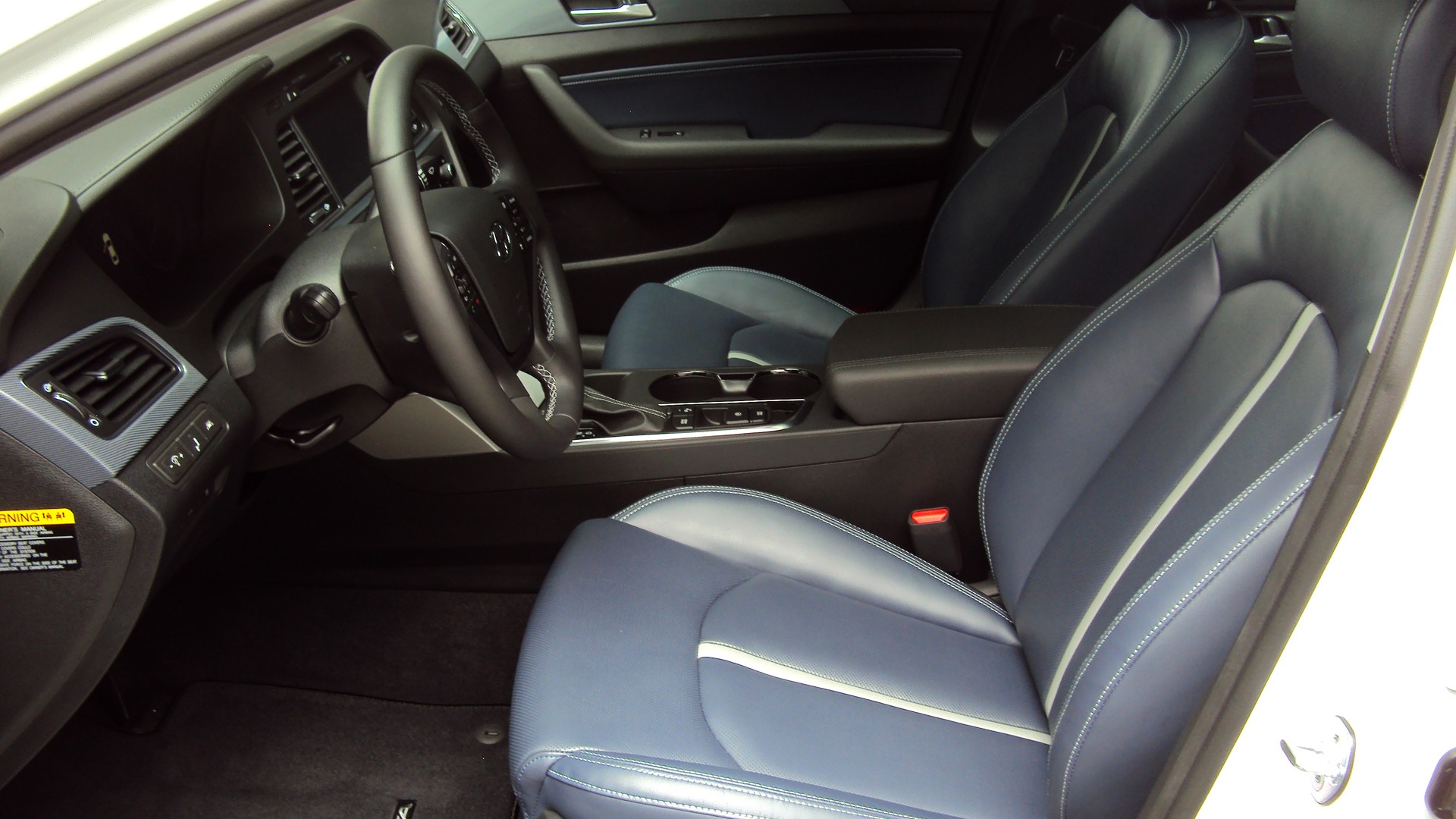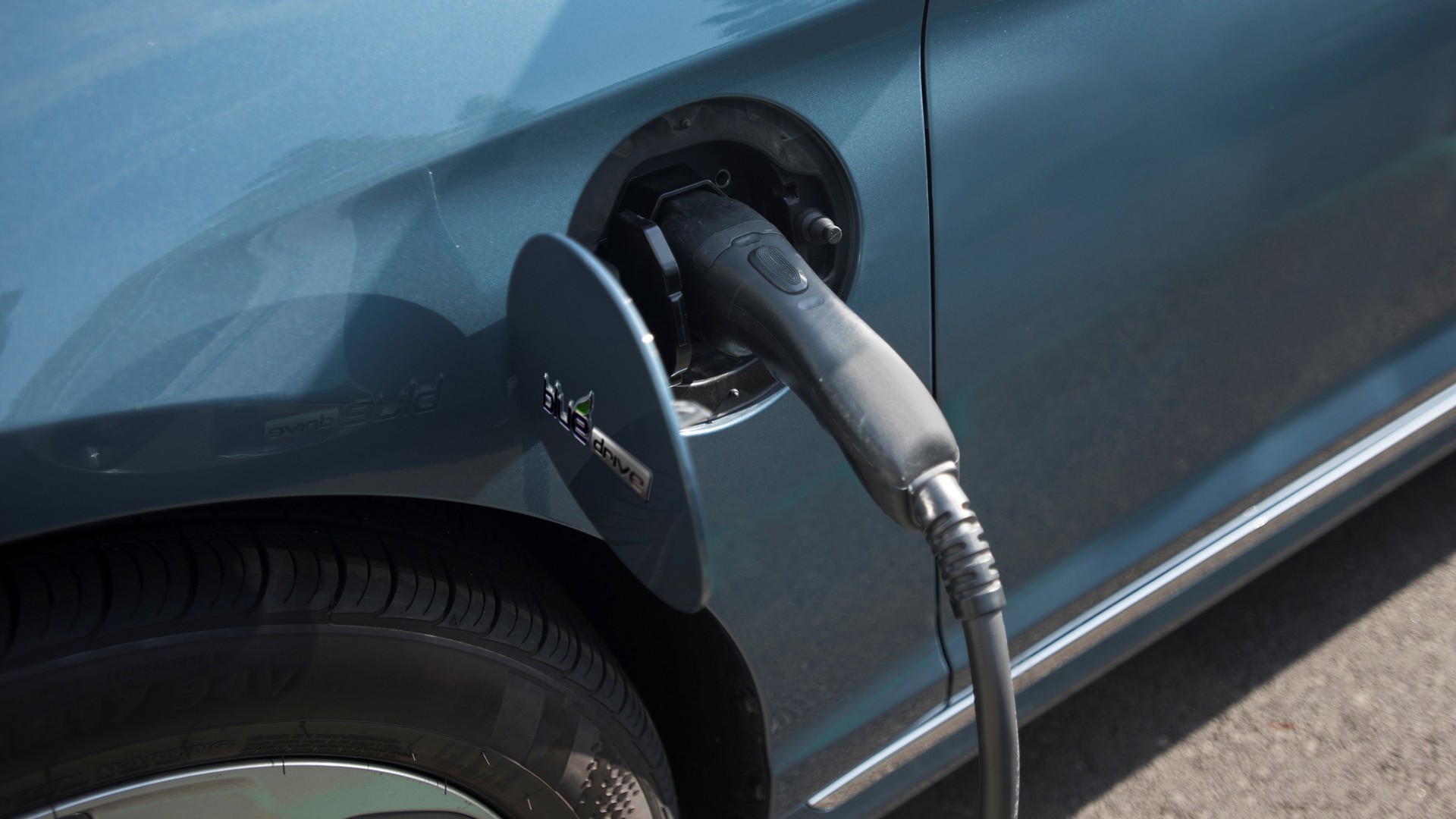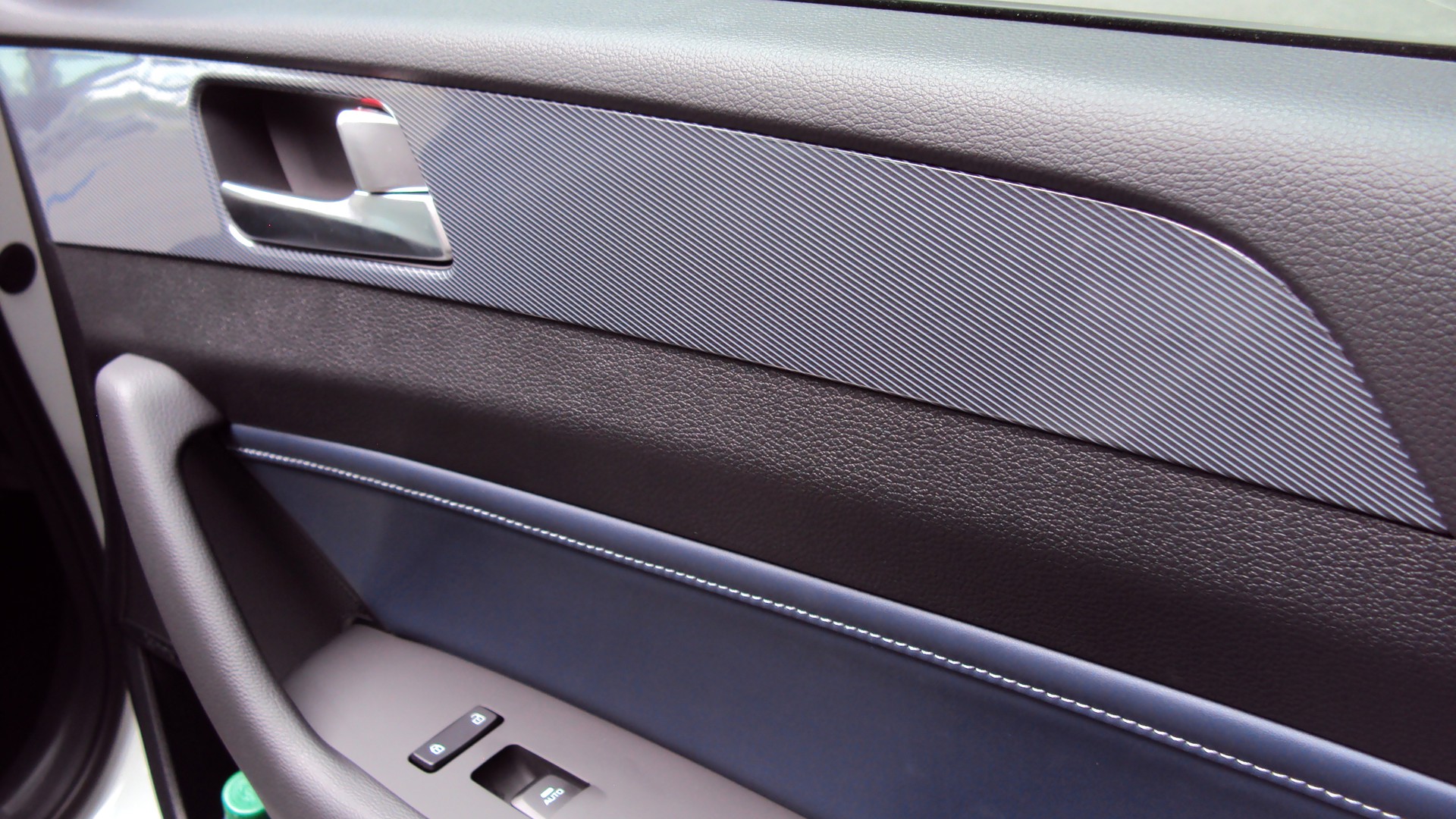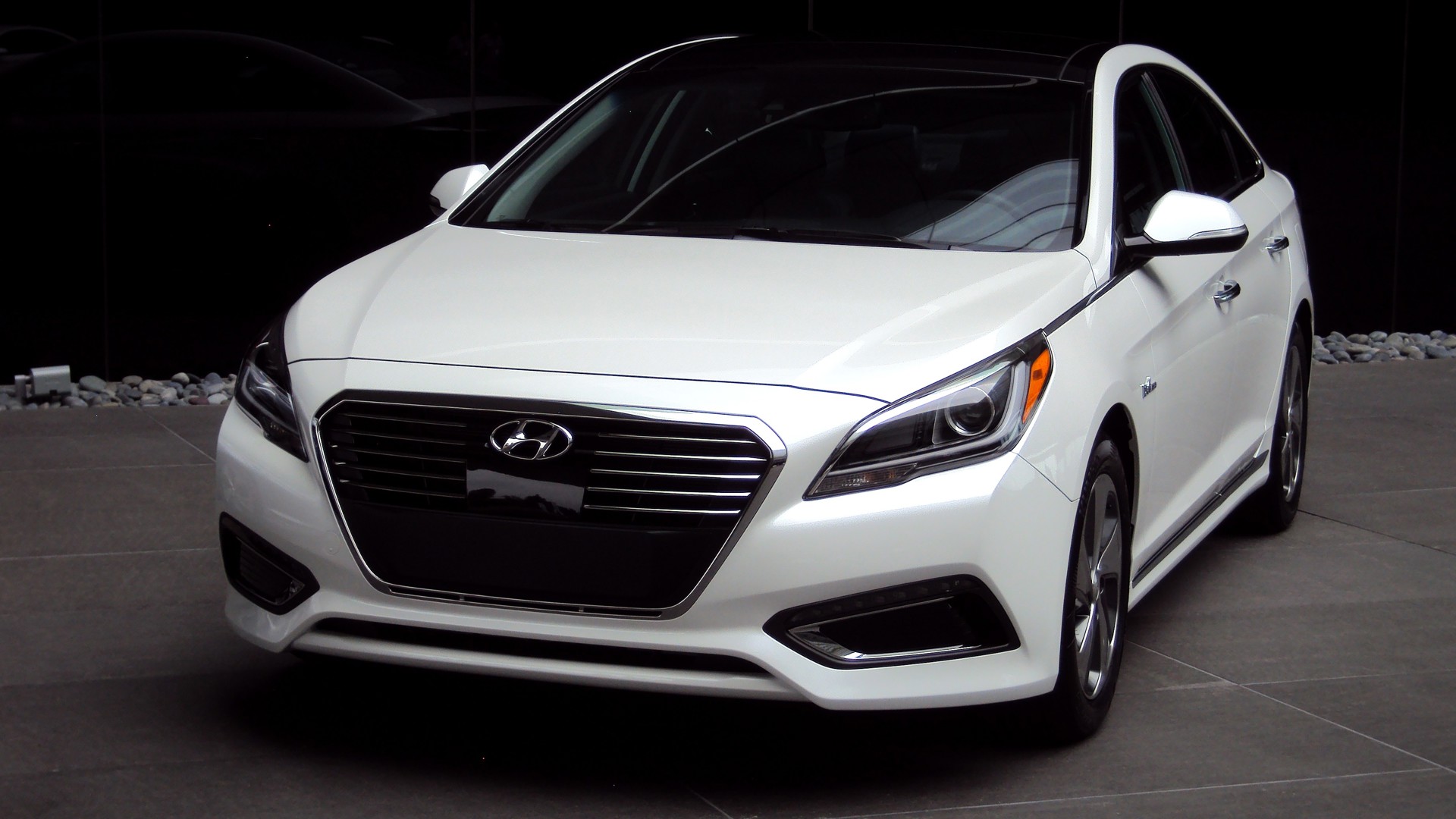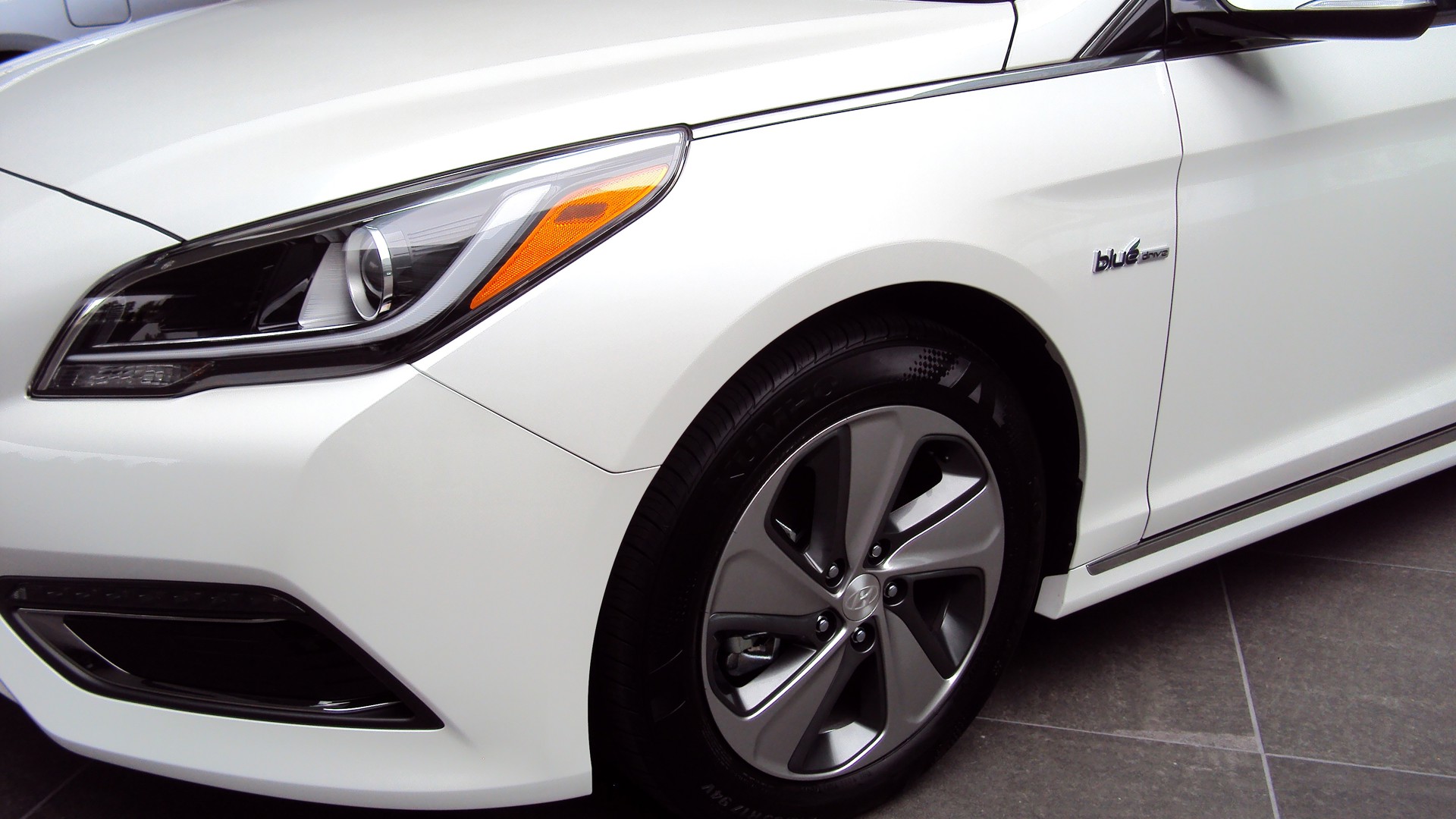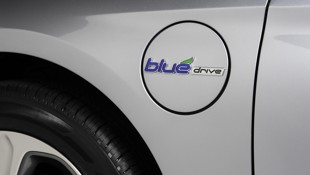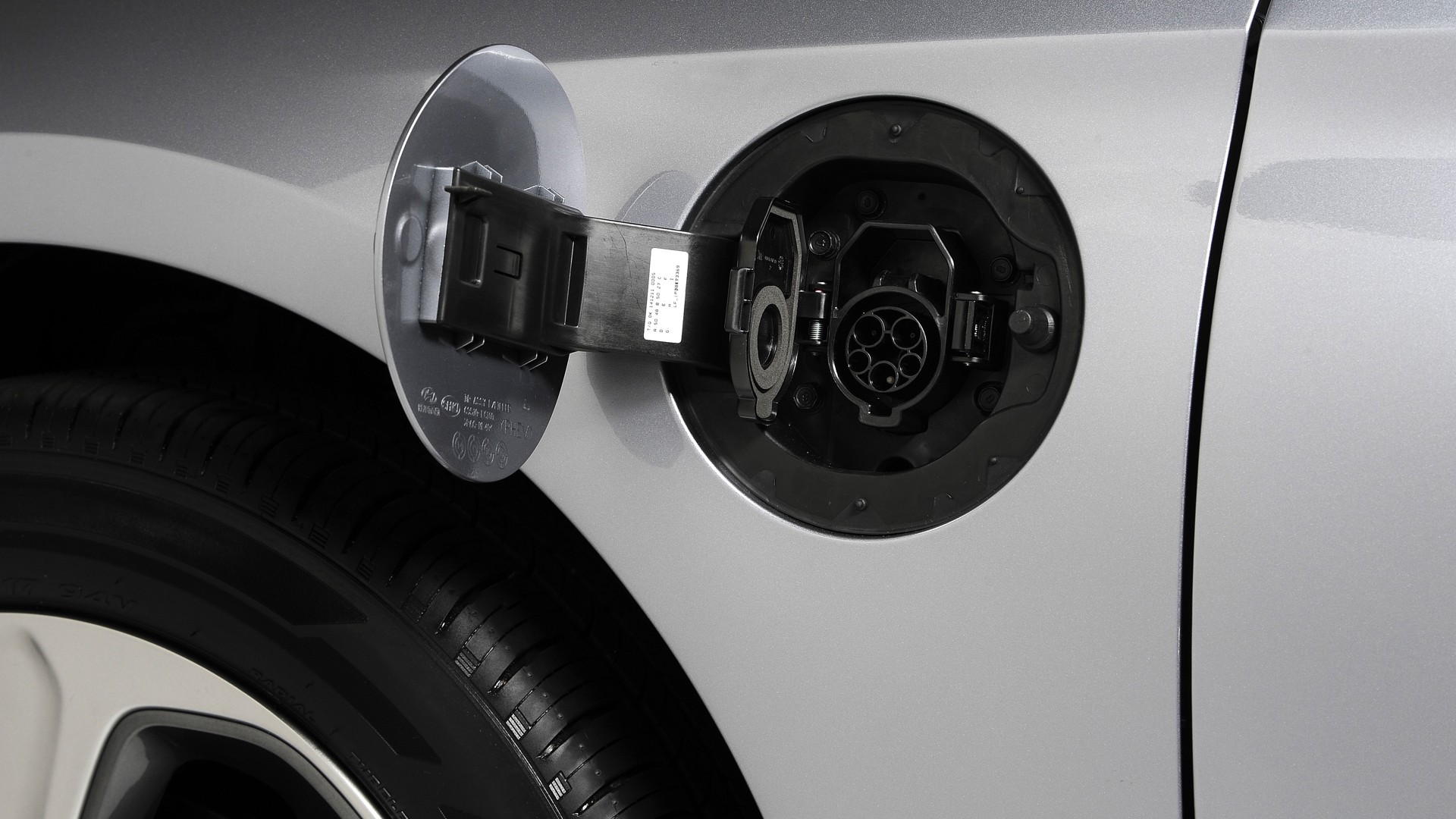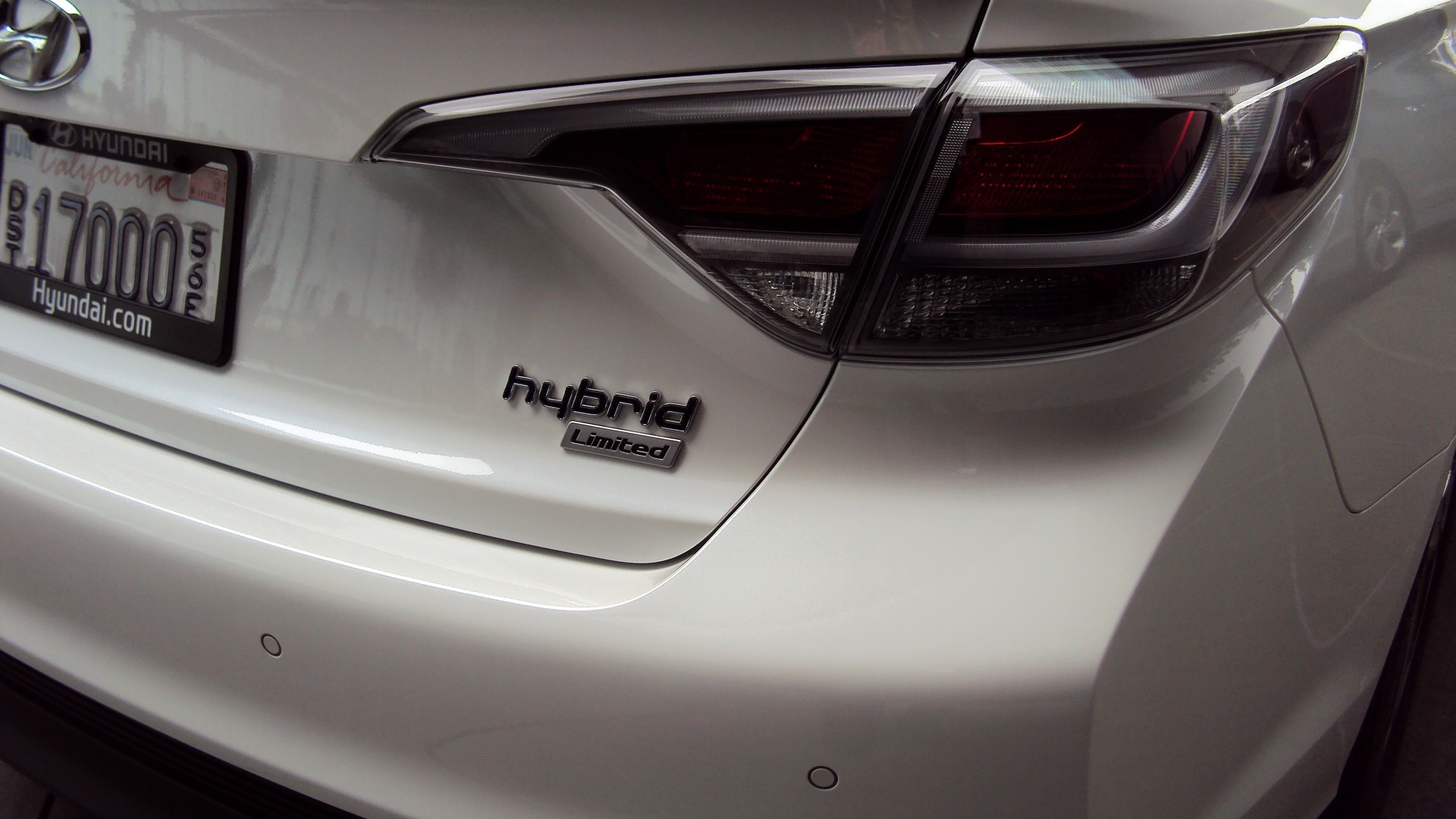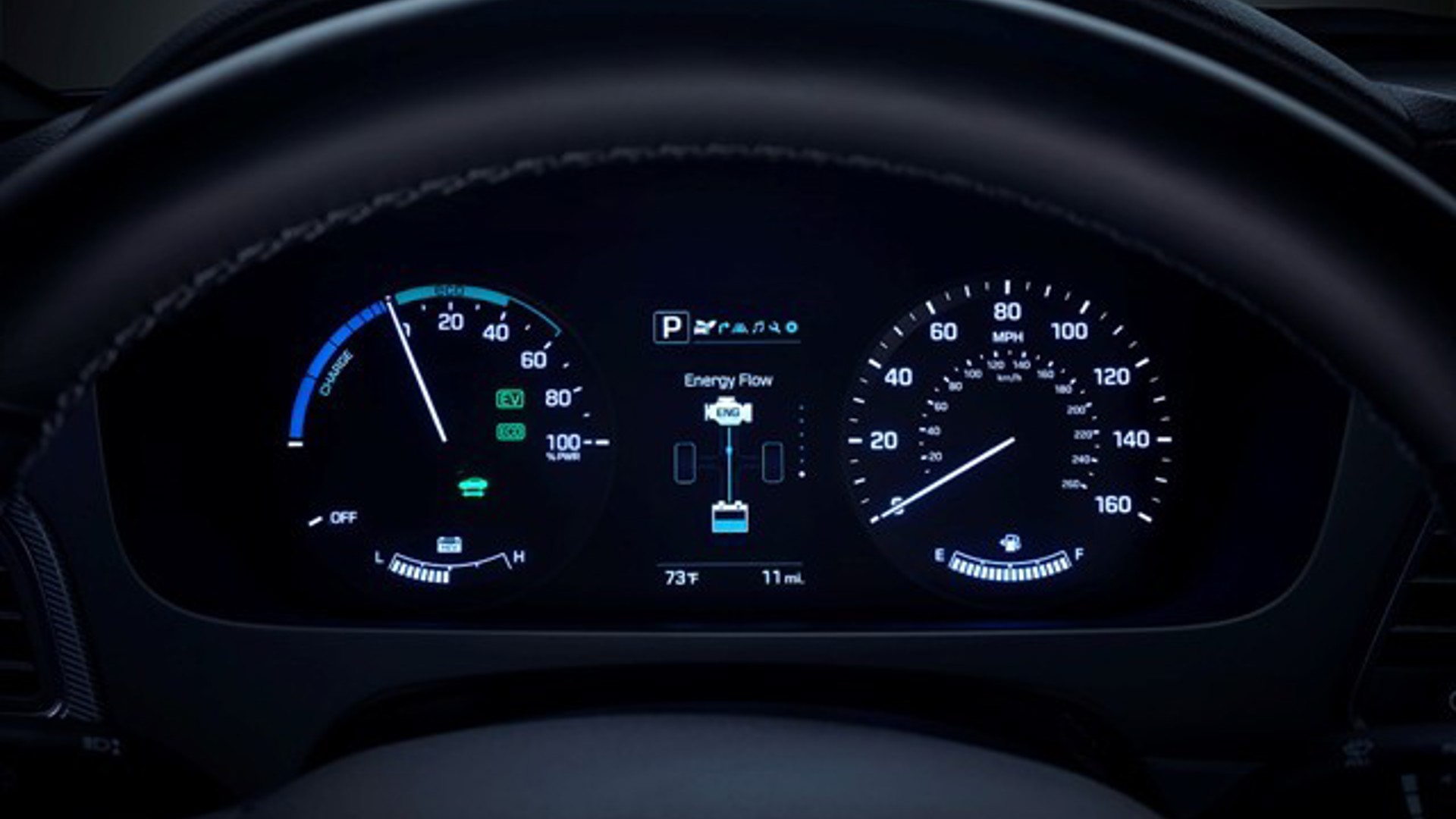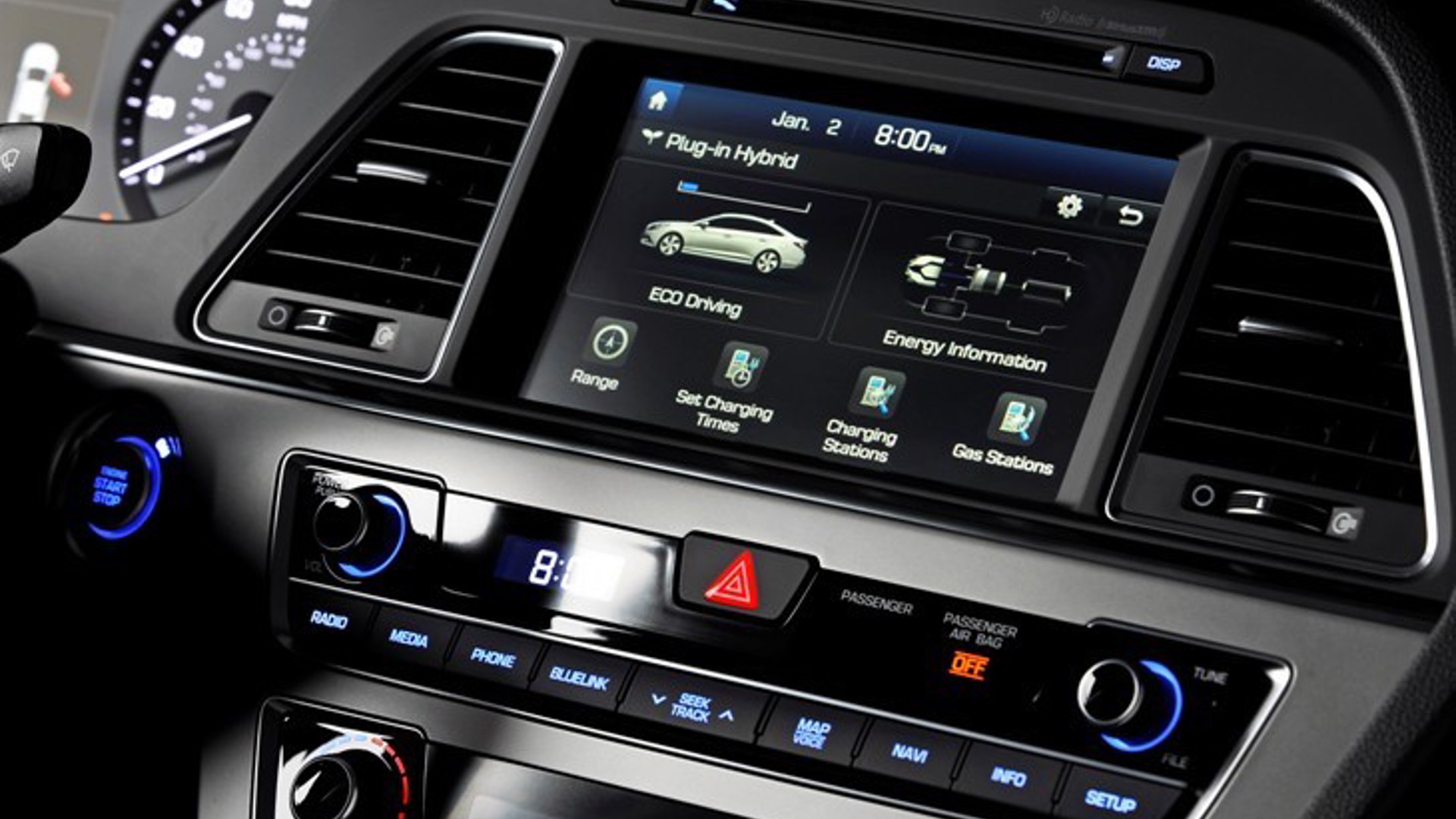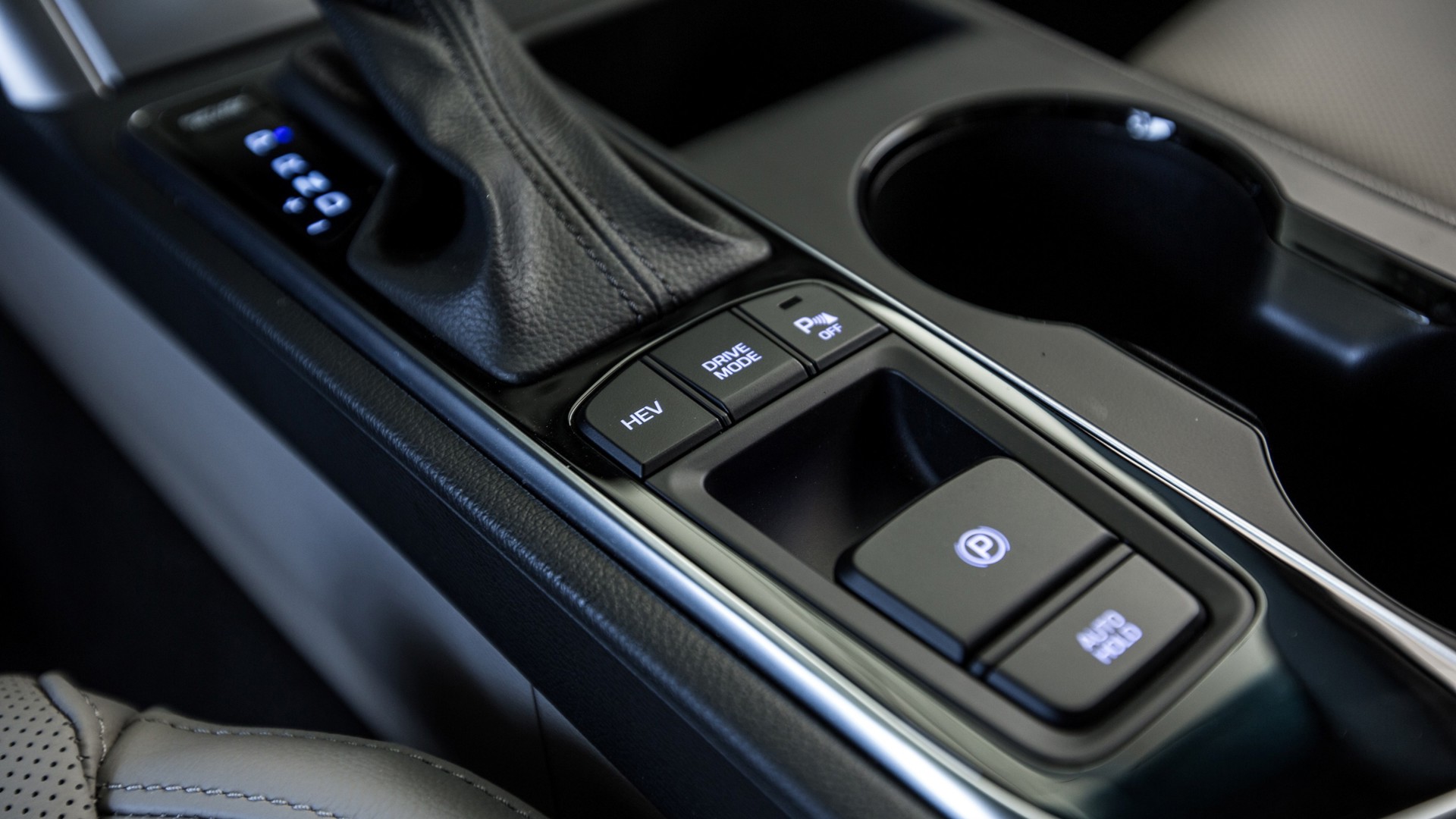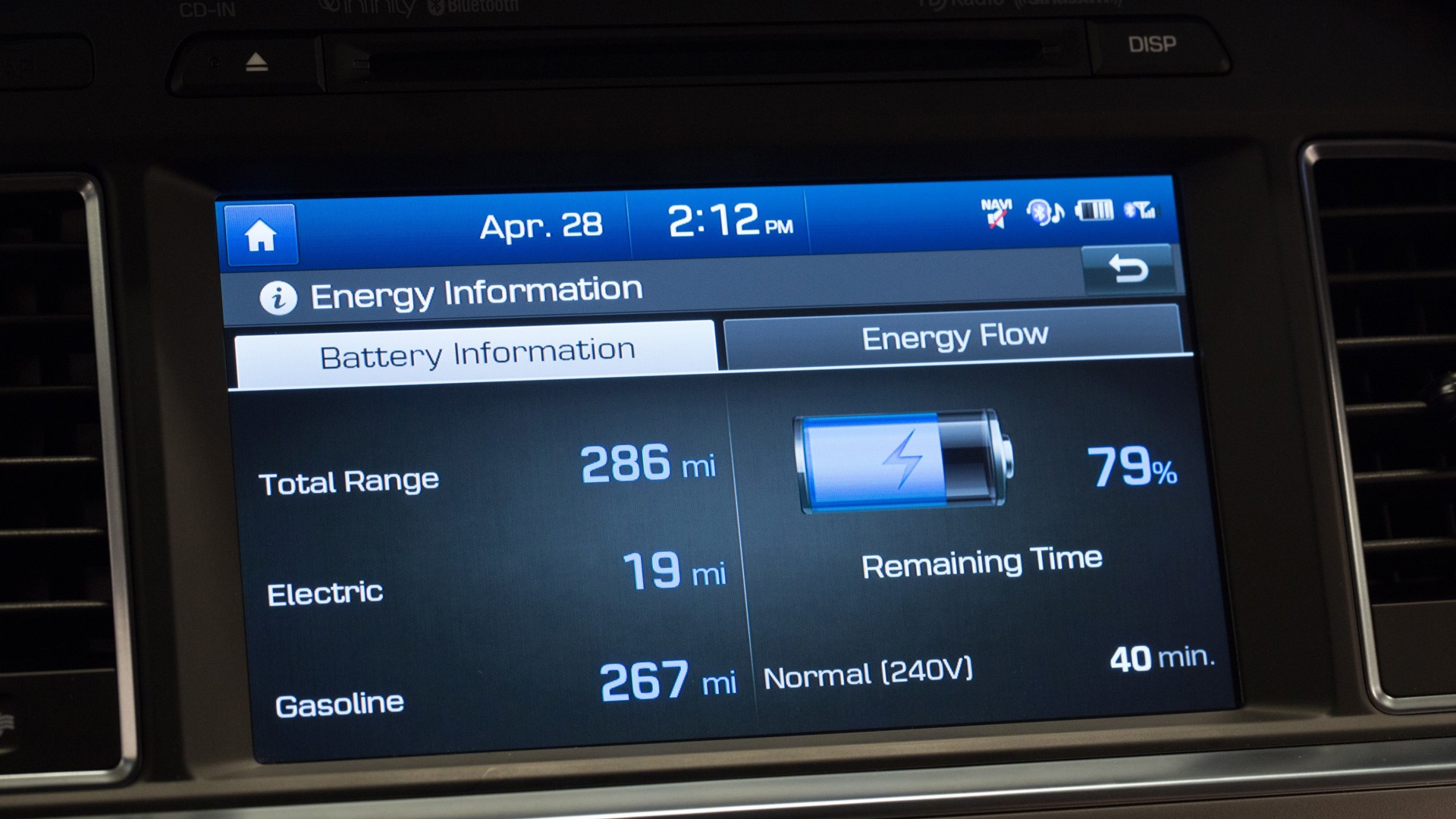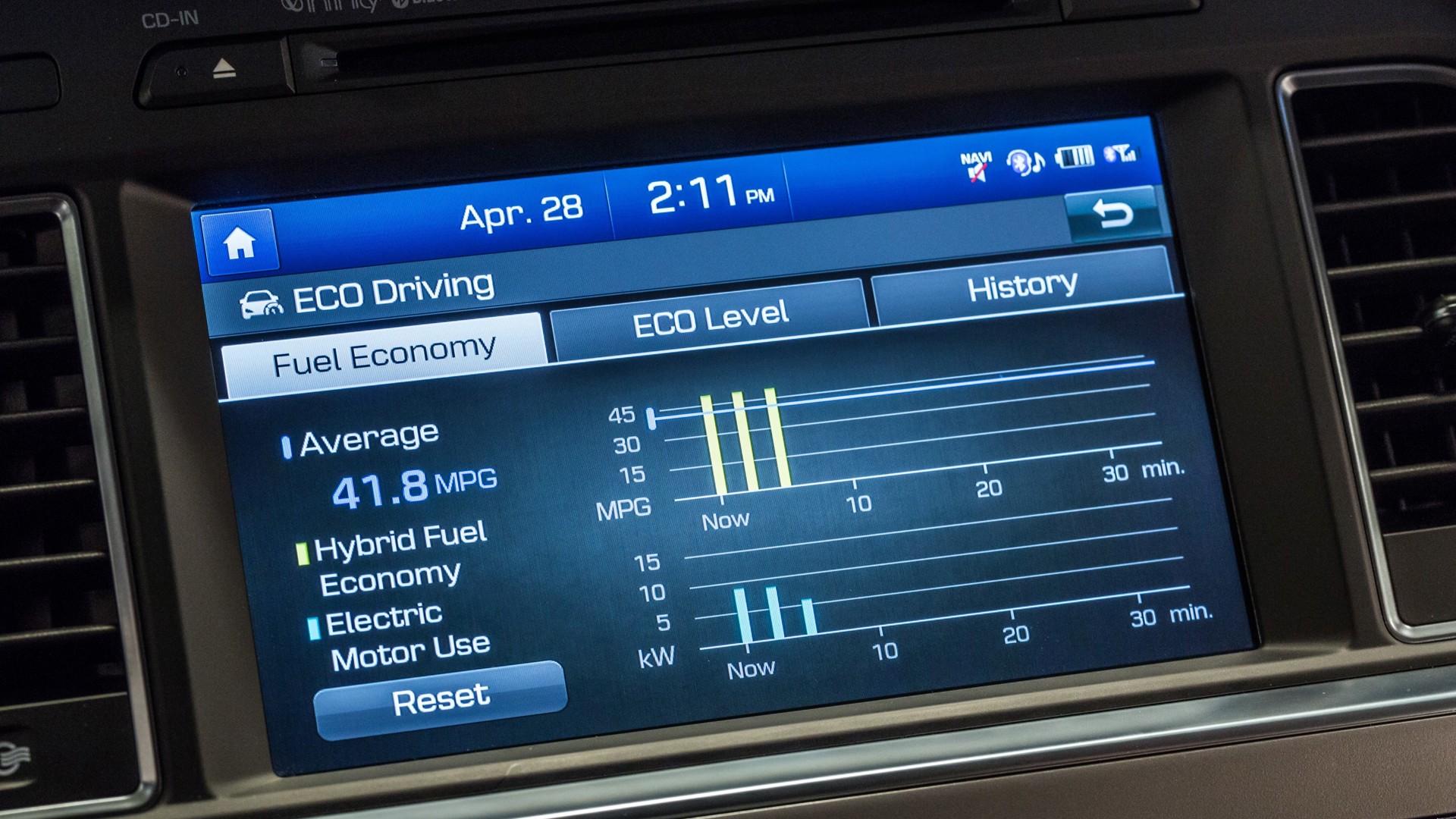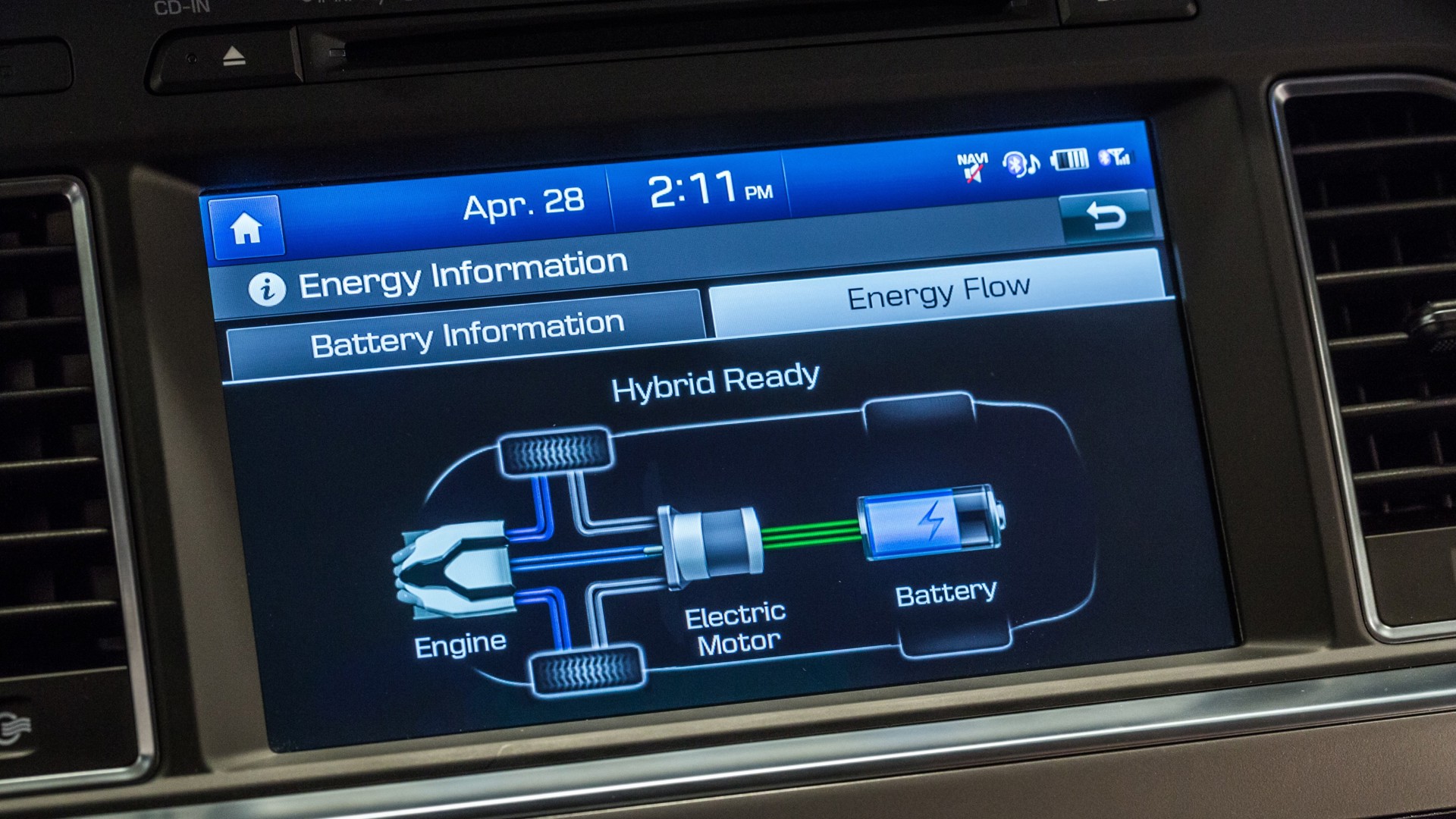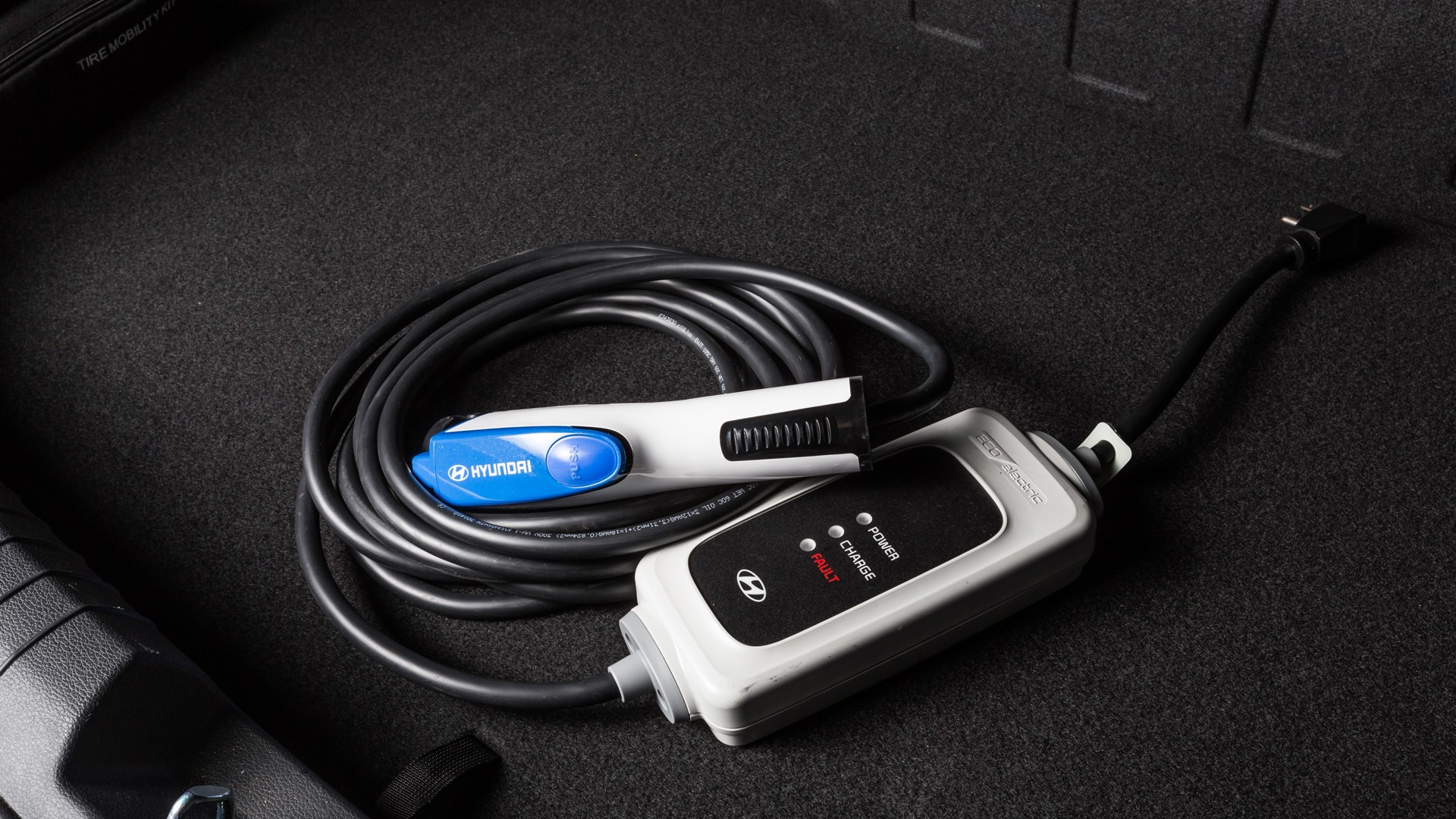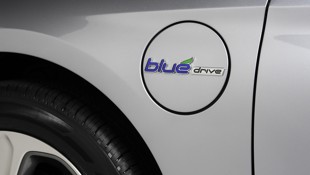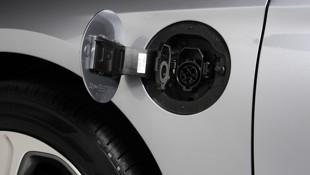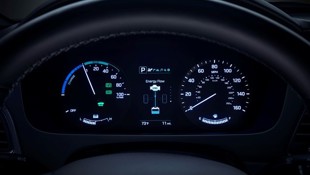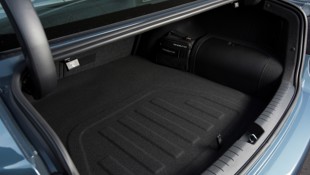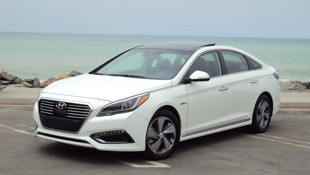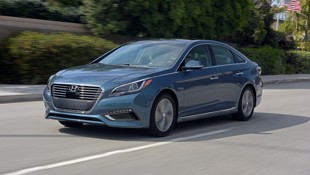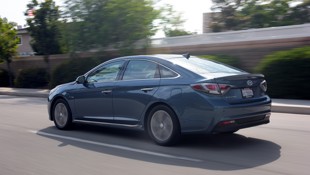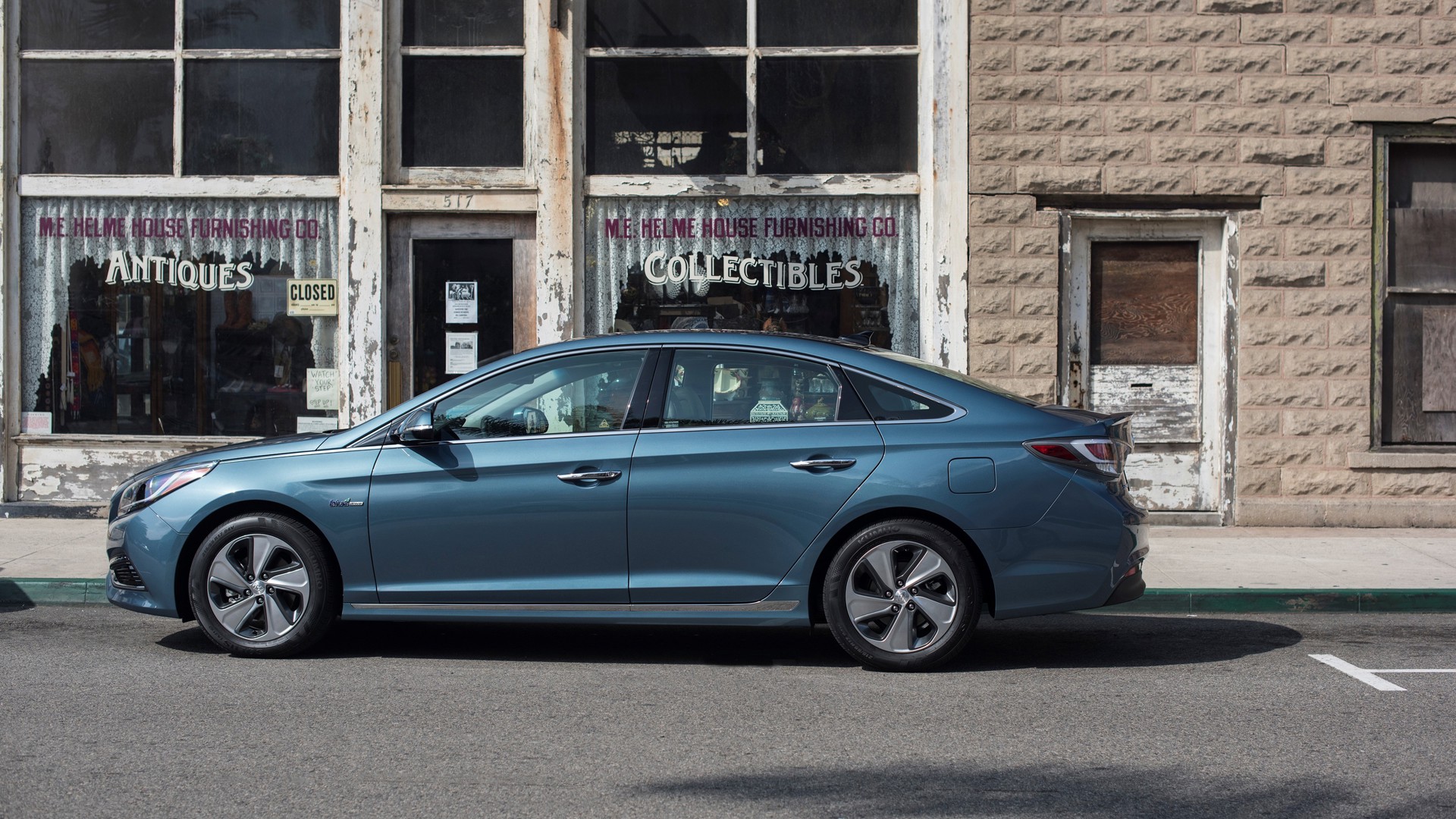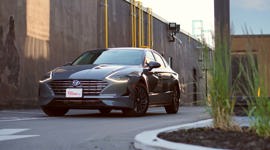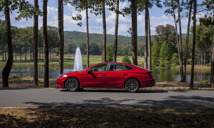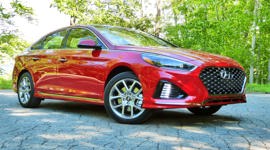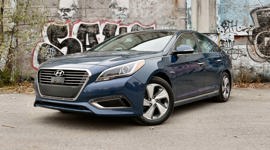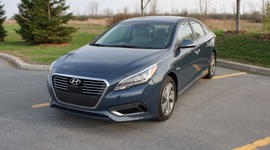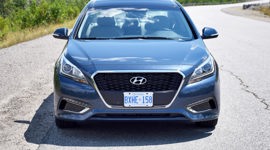Fuel-efficient cars sell well when gas is expensive, but not when it's cheap. That's basic economics, and something that can't always be predicted; tie that in with long auto industry development cycles and you sometimes wind up with a car that reaches the market at exactly the wrong time.
These days it's never really the wrong time to bring out a plug-in hybrid model, but there could certainly be a better time than right now, when gas isn't much more than a buck a litre, and hybrids and electric vehicles make up less than one percent of Canadian new vehicle sales – and that's down from 1.2 percent in 2014.
Nonetheless, here's Hyundai's first plug-in model, one of two versions of its new, second-generation Sonata Hybrid, the other a straight-up hybrid model.
Hyundai says hybrids and electric vehicles make up less than one percent of Canadian new vehicle sales so far in 2015 – and that's down from 1.2 percent in 2014
Based on the latest Sonata, introduced last year as a 2015 model, the new hybrid follows the same formula as the car it replaces: it shares the basic look of the gas-only Sonata but is set apart by unique styling touches and functional improvements that Hyundai says put this car at the head of its class aerodynamically, making it as good at cheating the wind as a Tesla Model S.
There are significant mechanical changes that go deeper than the addition of a plug-in option. The gas engine is smaller than before, down to 2.0L from 2.4, and adds direct fuel injection, an electric water pump, and friction-reducing pistons, bolstered by a stronger electric motor juiced by a higher-capacity battery. The aim was better fuel economy that further improves with the plug-in model's 32-km electric-only range on a fully-charged battery. Other mechanical updates include revised brakes engineered to rely more on regenerative braking to recover more energy when stopping.
Total power output is 202 hp in the plug-in model, and 193 in the regular Sonata Hybrid, the difference being down to the plug-in model's stronger electric motor. The gas engine is capable of 154 hp and 140 lb-ft of torque on its own; Hyundai says the electric motor makes 111 lb-ft of torque but doesn't publish a combined torque figure. For the record, the old Sonata Hybrid was rated at 199 hp and 235 lb-ft.
Interesting news on the packaging front includes a redesigned lithium-ion polymer battery pack that fits under the trunk floor. That eliminates the spare tire (replaced by a tire sealant kit) and makes the Sonata Hybrid the first gas-electric sedan with a full-size trunk and proper folding seatbacks. The more space-friendly battery can hold more energy and produce more power, both a bit more efficiently.
That doesn't carry through to the plug-in model, whose larger battery won't all fit under the floor and so also occupies the space behind the back seat.
What does carry over from the previous-gen car is a six-speed automatic transmission; Hyundai (and Kia, whose current Optima Hybrid is a mechanical clone of the old Sonata Hybrid) is alone among its competitors in not funneling power through a continuously variable transmission (CVT). Company reps say the decision was driven by a desire to use a smaller electric motor, but followed that up by telling us it was also less expensive than developing a transmission that would be unique to a low-volume hybrid model. Whatever the reason, Hyundai says the six-speed isolates the car from the usual CVT criticisms, such as a droning engine note and generally uninspired performance.
Who cares? We'd guess 90 percent of hybrid buyers aren't bothered about inspired performance in their gas-electric cars, and those who do either get their jollies with a sports car on the weekend, or by spending close to six figures for a Porsche Panamera Hybrid or a Tesla Model S for commuting.
Besides, that six-speed was one of the main knocks against the first-gen Sonata Hybrid, in which it proved less adept at blending the car's power sources than the CVTs in hybrid versions of the Ford Fusion, Honda Accord, and Toyota Camry. Hyundai made some changes to address those complaints, including some to the transmission's internals. A high-voltage electric oil pump replaces the combo of mechanical and low-voltage electric pumps in the old gearbox and boosts the transmission's energy efficiency by 10 percent.
We reserved judgment until we drove the car, at which point we were pleasantly surprised: the revised six-speed does its work more transparently, especially in all-electric mode. Now our beef is a different one: plant your right foot at cruising speeds and you're left waiting a couple beats for the acceleration you want, so planning ahead is required for quick passing maneuvers.
Once the car gets moving, it goes just fine, the electric motor boosting the car's performance with a pile of low-end torque. We wafted along the Pacific Coast Highway between Huntington Beach and La Jolla, California on the car's soft suspension; this is definitely a more relaxed rider than the turbocharged 2.0T version of the gasoline Sonata, but straight-line performance fits somewhere in between it and the non-turbo gasser, owing to that electric torque. Running on juice alone, the PHEV model feels plenty powerful for normal driving, though you're working with just 67 hp and 111 lb-ft.
Both models get eco, normal, and sport drive modes that alter transmission and throttle responses; switching from eco to sport didn't fix the lazy throttle complaint. A more useful feature is the HEV button behind the shifter that activates both an electric-only mode for low-speed situations, and a segment-unique charging mode that, when engaged in highway driving, will bring the battery up to a full charge in 30 to 60 minutes. Time things right and you can start your trip with a full charge (after unplugging), and end it that way, too.
Hyundai says a full battery in the plug-in model is good for 39 km, but that appears to be a conservative estimate: one of the company's Canadian PR folks says she managed 45 km or so, and another writer at this event was able to do about as well as that.
Other tech stuff includes a new eco driving guide that tells you what percentage of your driving is eco-friendly, normal (whatever that means) and aggressive. More useful-sounding is a feature called coasting guide control, which works in concert with the car's navigation system to suggest when to begin decelerating for turns in an effort to maximize regenerative braking and save fuel. We didn't try it during our drive, but we'll give it a shot when we get a car for a regular week-long test drive.
Hyundai's fuel consumption estimates are 5.9/5.3 L/100 km (city/highway) with a combined rating of 5.6, splitting the difference between combined ratings for the Toyota Camry and Ford Fusion hybrids. The company hasn’t calculated plug-in hybrid consumption figures yet.
Both hybrid models share interior design with the gas-only Sonata, so there's not much to report here, save for an available blue upholstery colour that's a neat alternative to the usual beige and grey hues. That blue leather is paired with unique striped trim that replaces the fake wood used with the other colours.
Features-wise, the standard hybrid model comes with seven airbags (including a driver's knee airbag), blind spot detection with lane change assist, rear cross traffic alert, dual-zone automatic climate control, 16-inch aluminum wheels, LED daytime running lights and taillights, intelligent keyless entry with push-button start, hands-free trunk opening, heated front seats, leather-wrapped steering wheel, six-way manual front passenger seat, five-inch colour display with backup camera, Bluetooth, six-speaker stereo, and a 4.2-inch colour trip computer display.
Limited trim adds 17-inch wheels, panoramic sunroof, LED interior lighting, eight-inch touchscreen navigation system, seven-speaker Dimension stereo, instrument cluster-top and door panel stitching, leather seats, eight-way power driver's seat with lumbar, heated rear seats, rear side window shades, auto-dimming rearview mirror with garage door opener and compass, etched aluminum sill plates, 60/40 split-folding rear seat, and console-mounted rear A/C vents.
Finally, Ultimate trim adds a six-way power front passenger seat, nine-speaker Infinity stereo, driver's integrated memory system, ventilated front seats, Xenon headlights with high-beam assist, adaptive cruise control, electric parking brake with auto-hold, forward collision and lane departure warning systems, and rear park assist sensors.
PHEV models come only in Ultimate trim, but delete the panoramic roof, rear side window shades, rear console air vents, and adjustable rear head restraints.
The 2016 Hyundai Sonata Hybrid goes on sale this summer, with Plug-in Hybrid availability to follow in the fall. Pricing will be announced closer to those on-sale dates.
